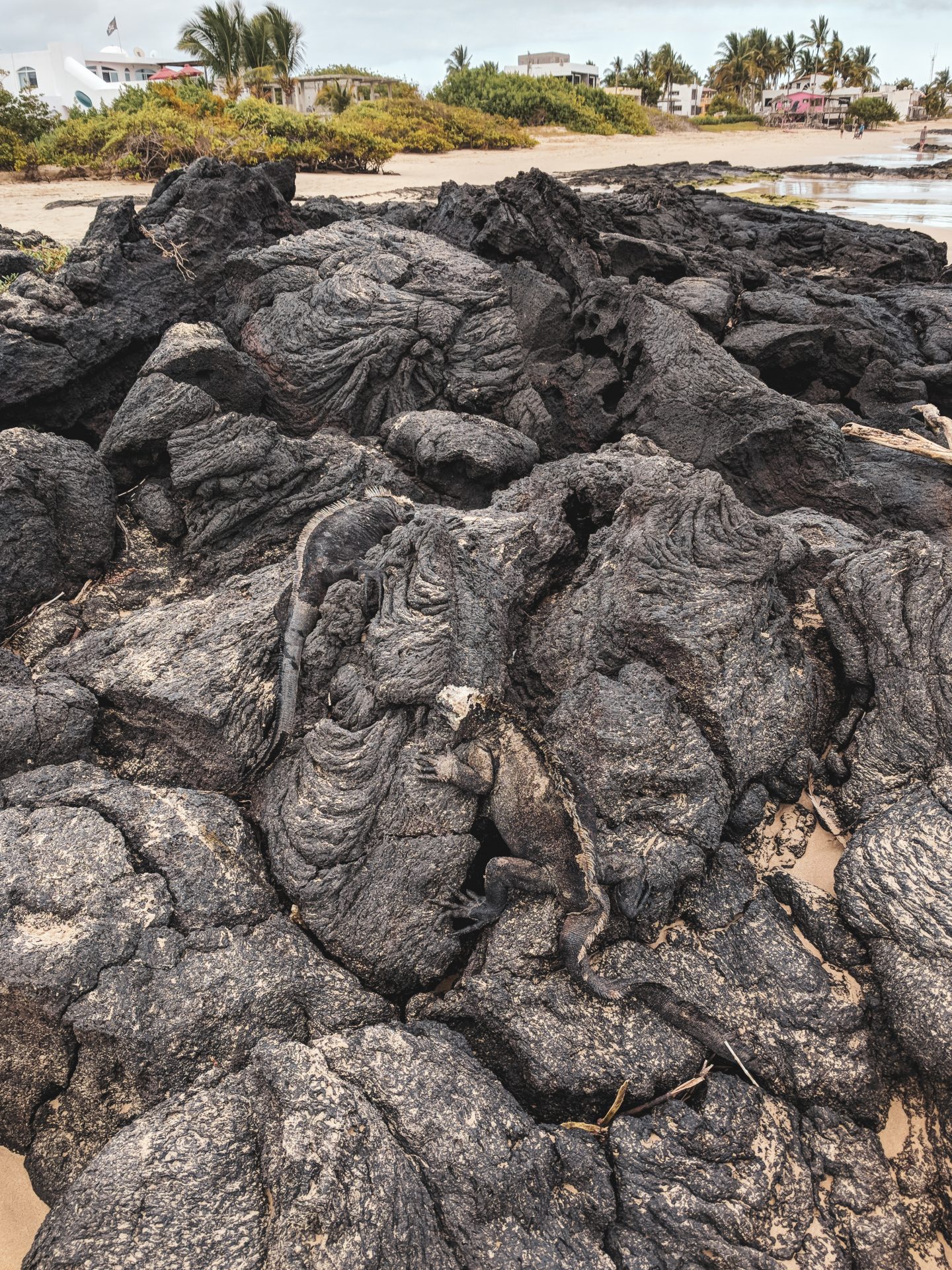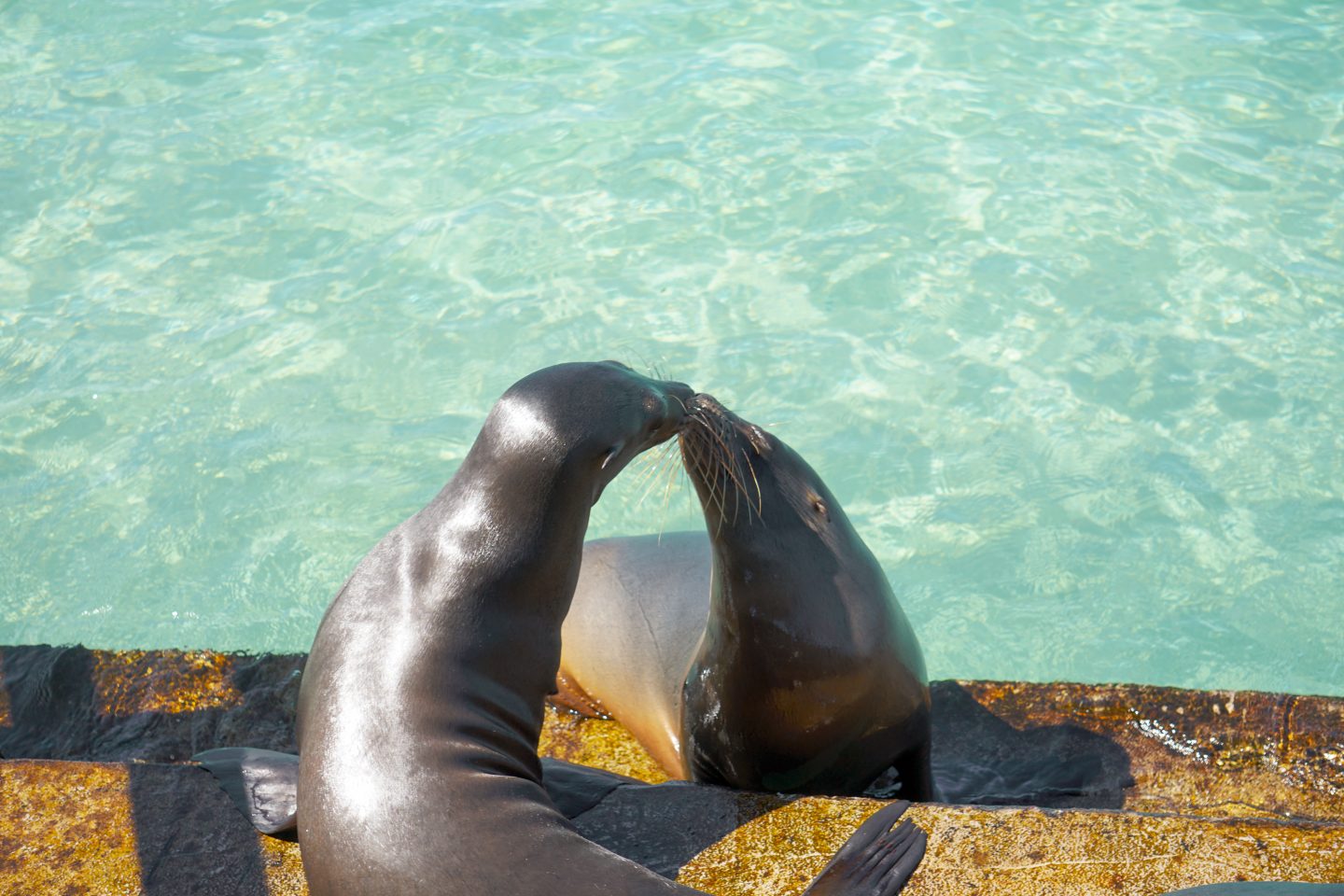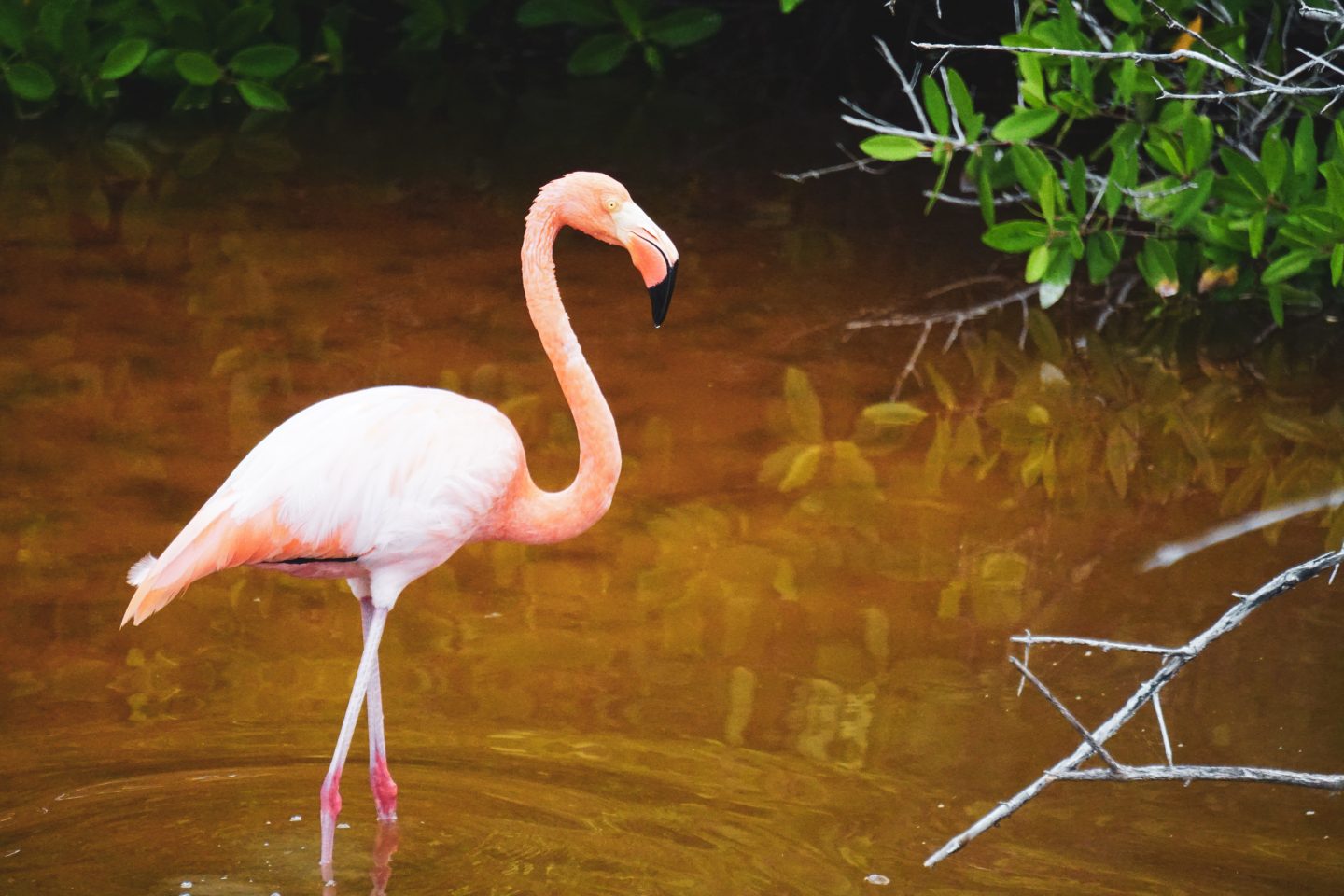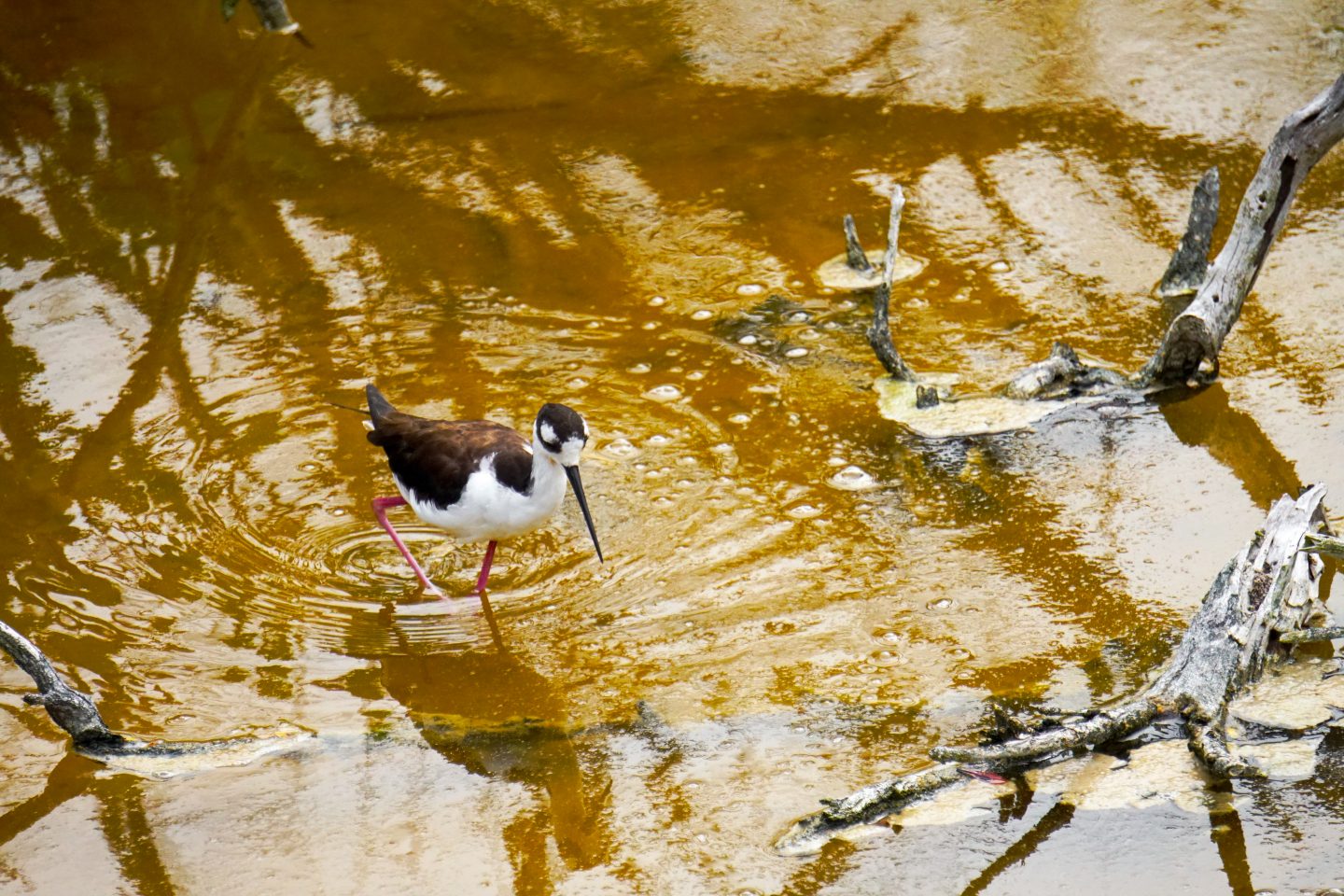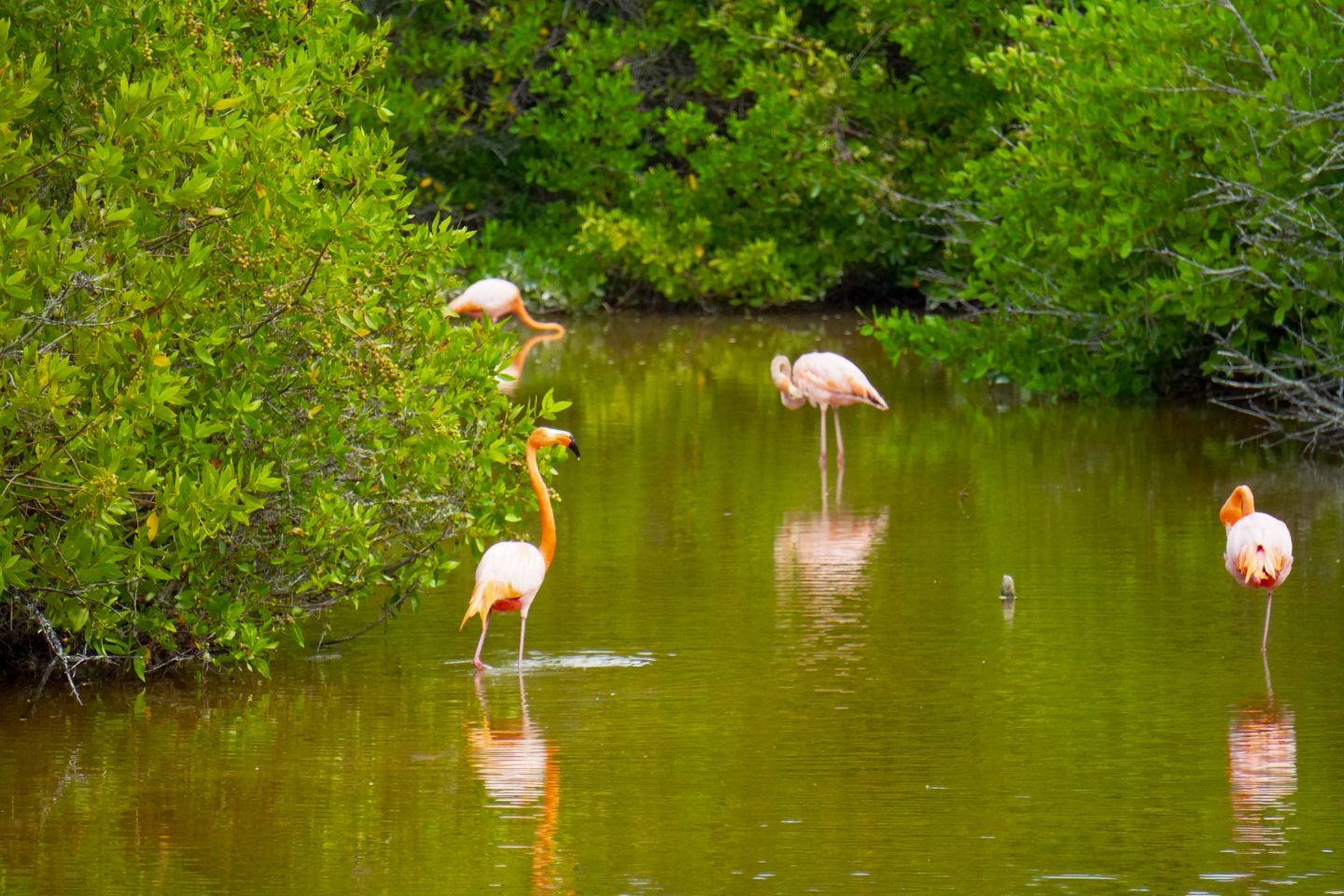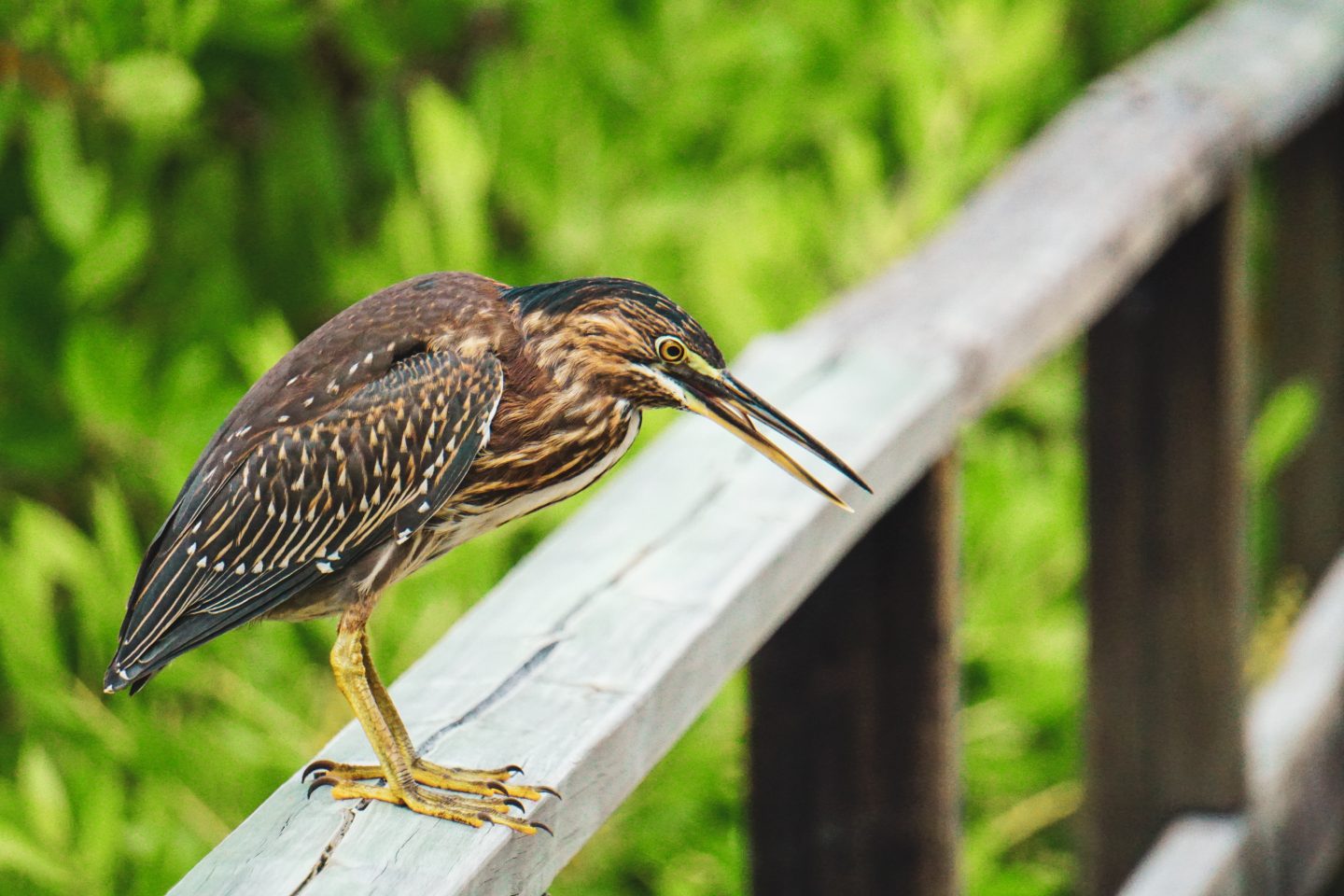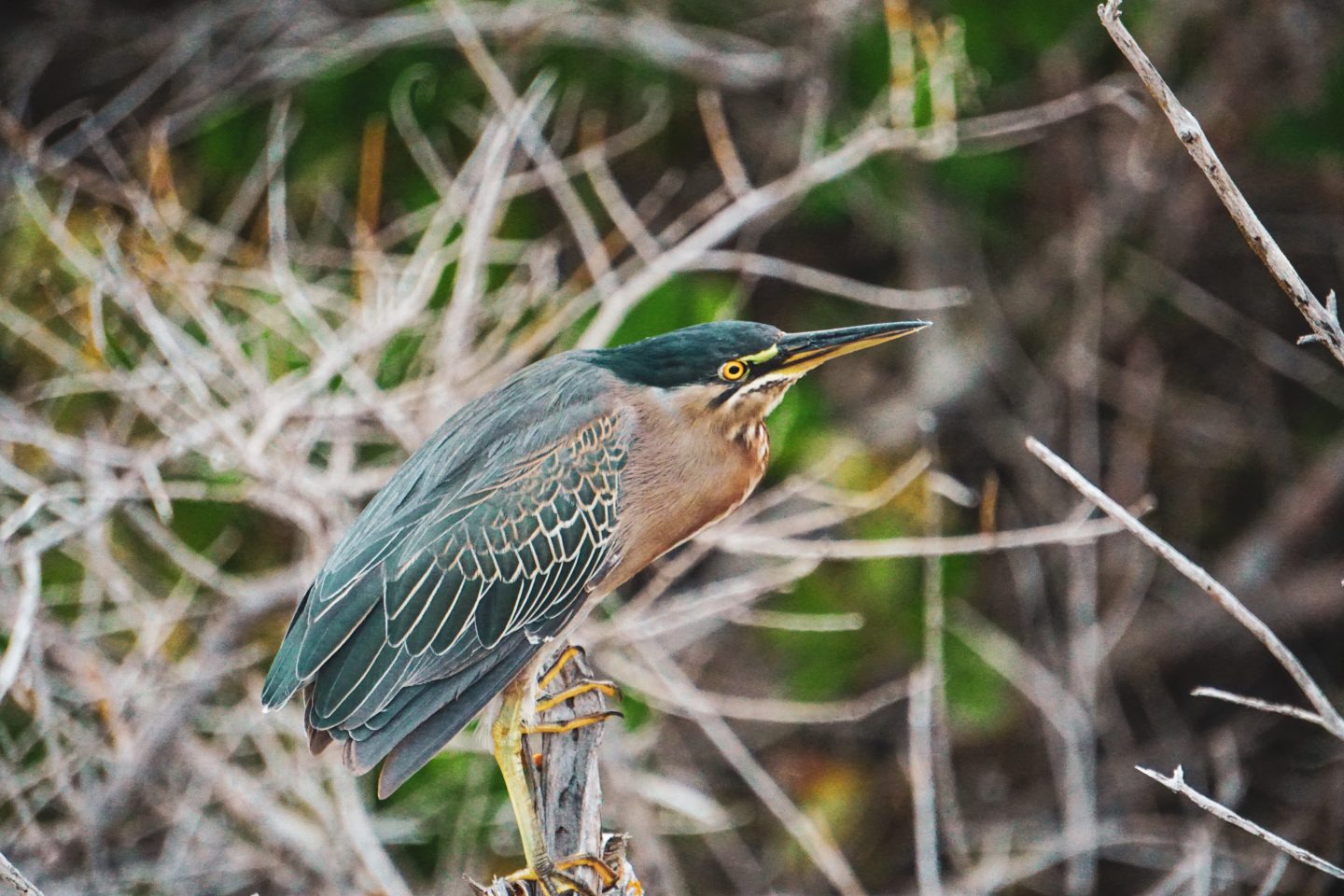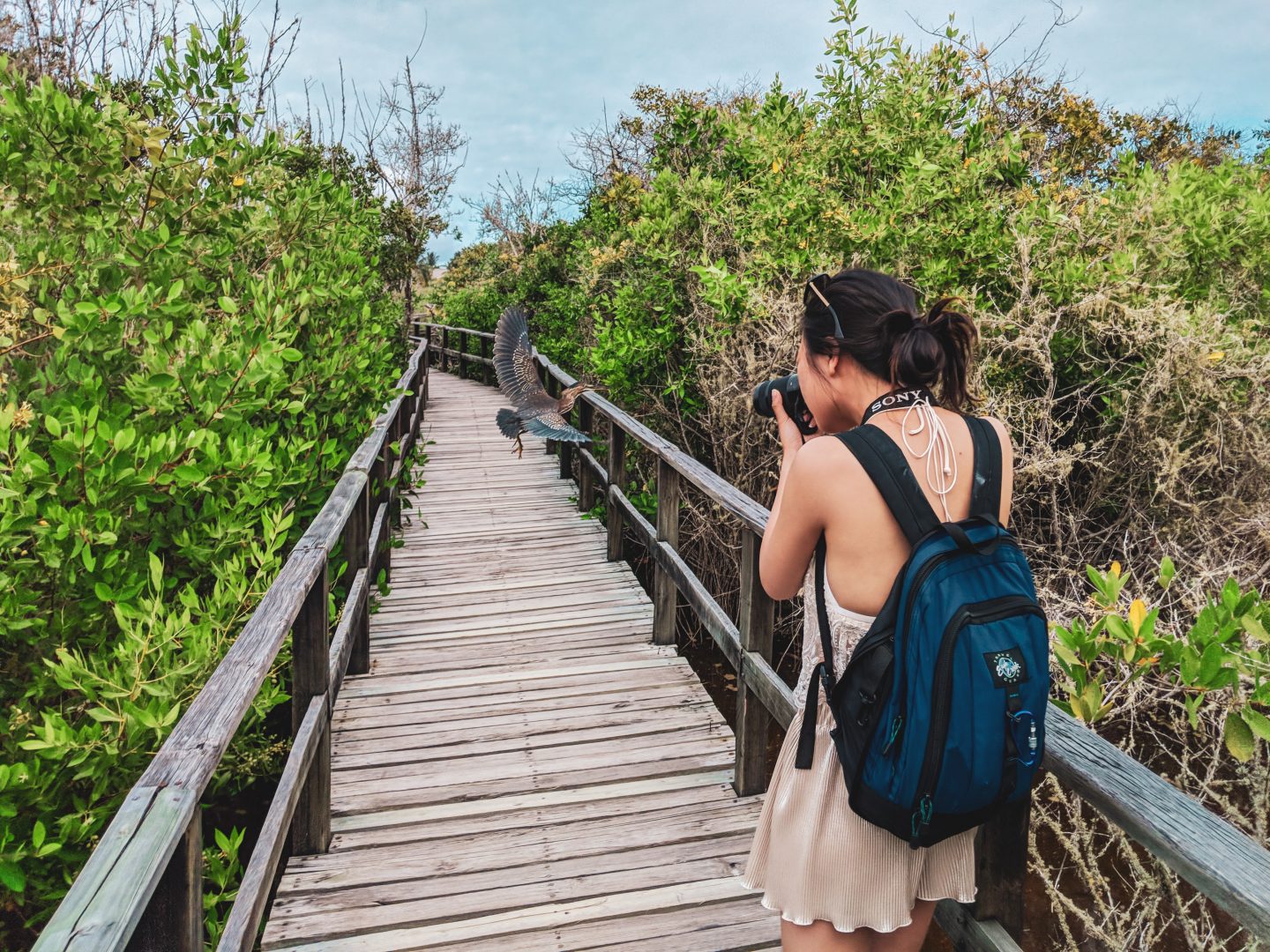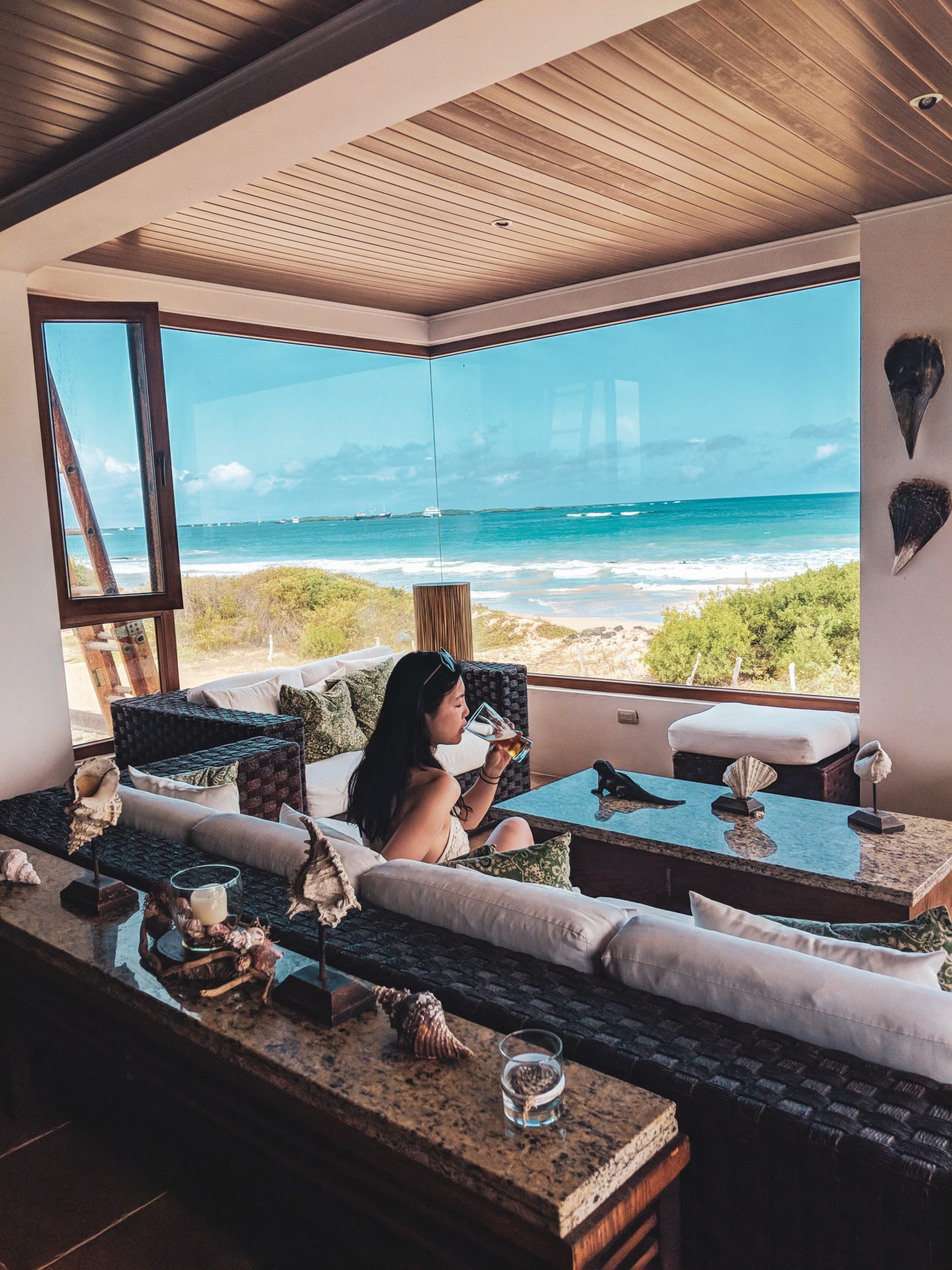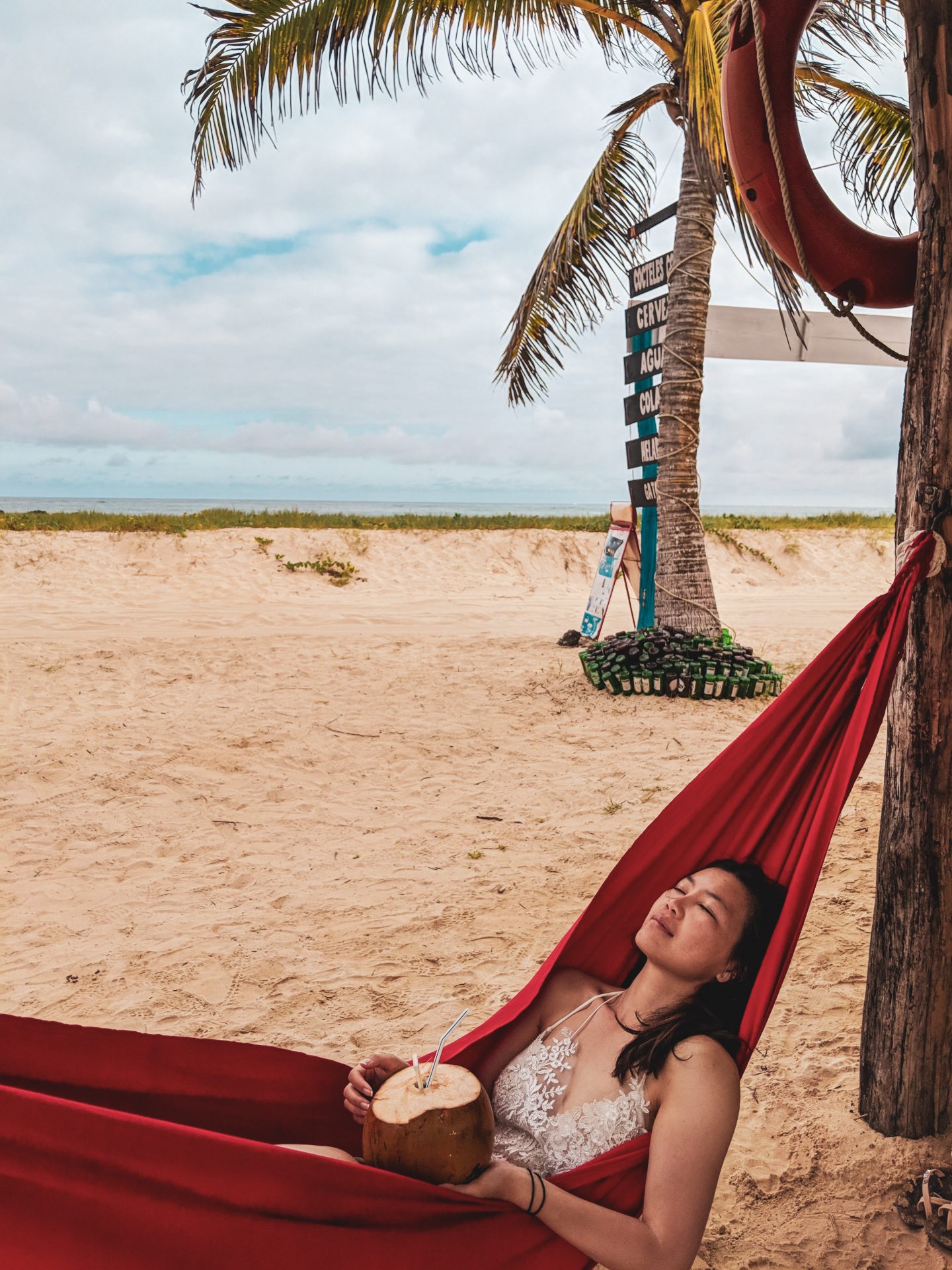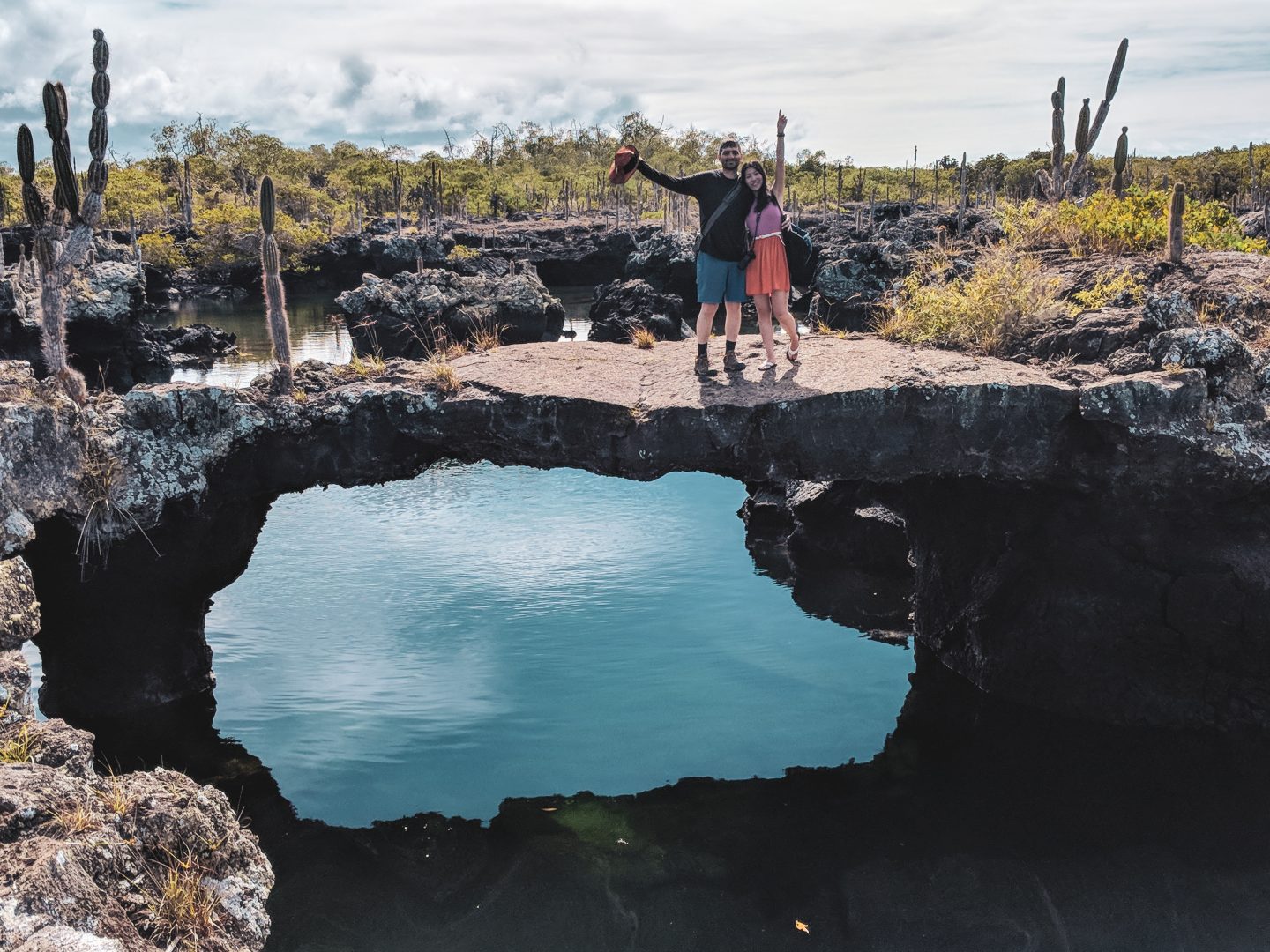The moment we set foot on Galapagos Islands, it feels like being in a BBC animal world documentary. This volcanic archipelago formation is located near the equator on the southern hemisphere, at the junction of three tectonic plates. The diverse geographic conditions here formed an unique habitat for the creatures living here. Before coming to the Galapagos, I never thought I could see penguins anywhere near the equator.
The animals living in the Galapagos have evolved over time to adapt to the environments here. The Galapagos is very much a mini laboratory for evolution. This is why after visiting the Galapagos Islands in 1835, Darwin was greatly inspired by what he saw here, and lead him to later publish his world famous Theory of Evolution, which shook human’s understanding on biological evolution and natural selection. In 1978, the Galapagos Islands was listed as the world’s first UNESCO World Heritage Site.
“Considering the small size of these islands, we feel the more astonished at the number of their aboriginal beings, and at their confined range… Hence, both in space and time, we seem to be brought somewhere near to that great fact, that mystery of mysteries –the appearance of the new beings on this earth.”
Charles Darwin, 1845.
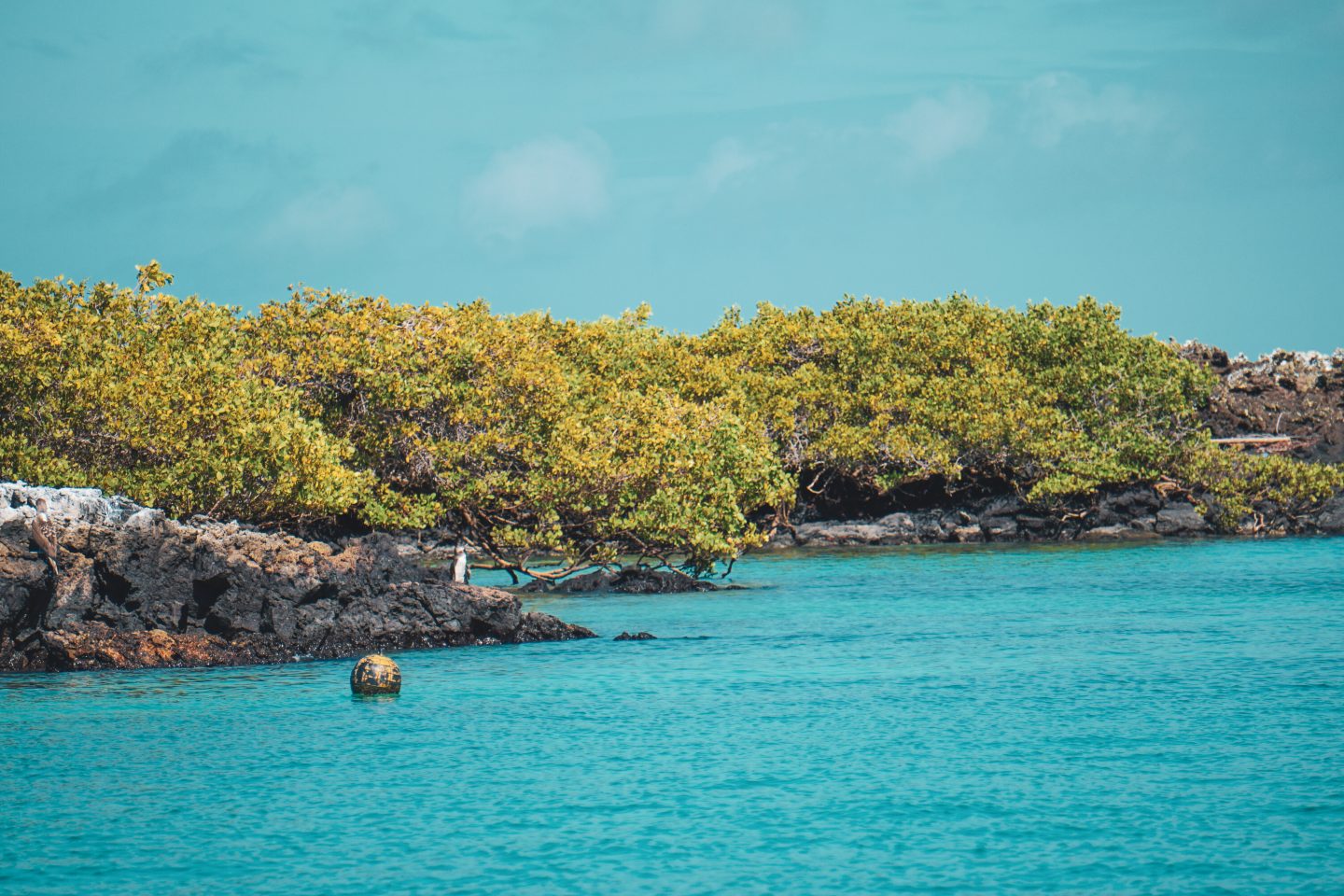
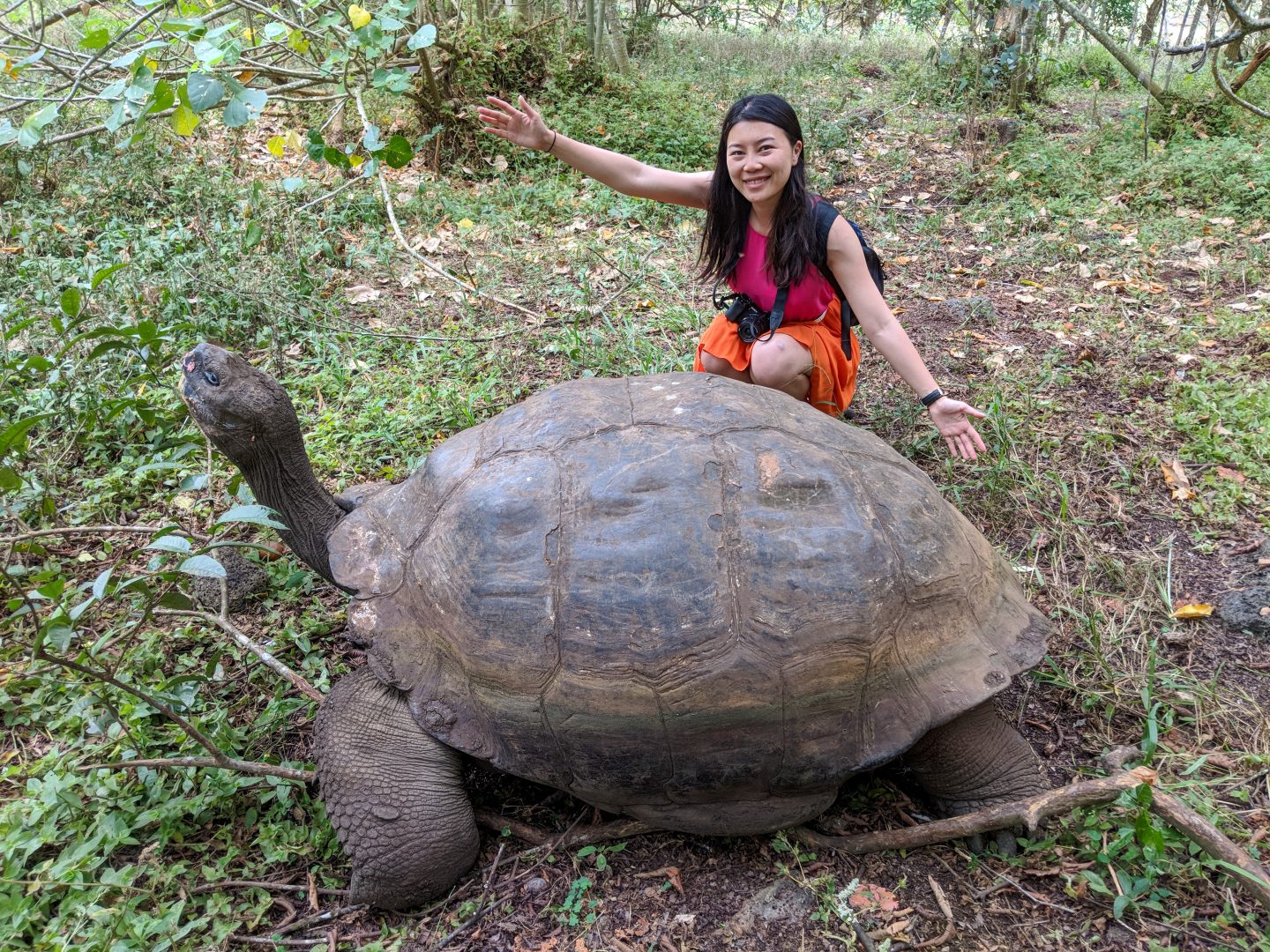
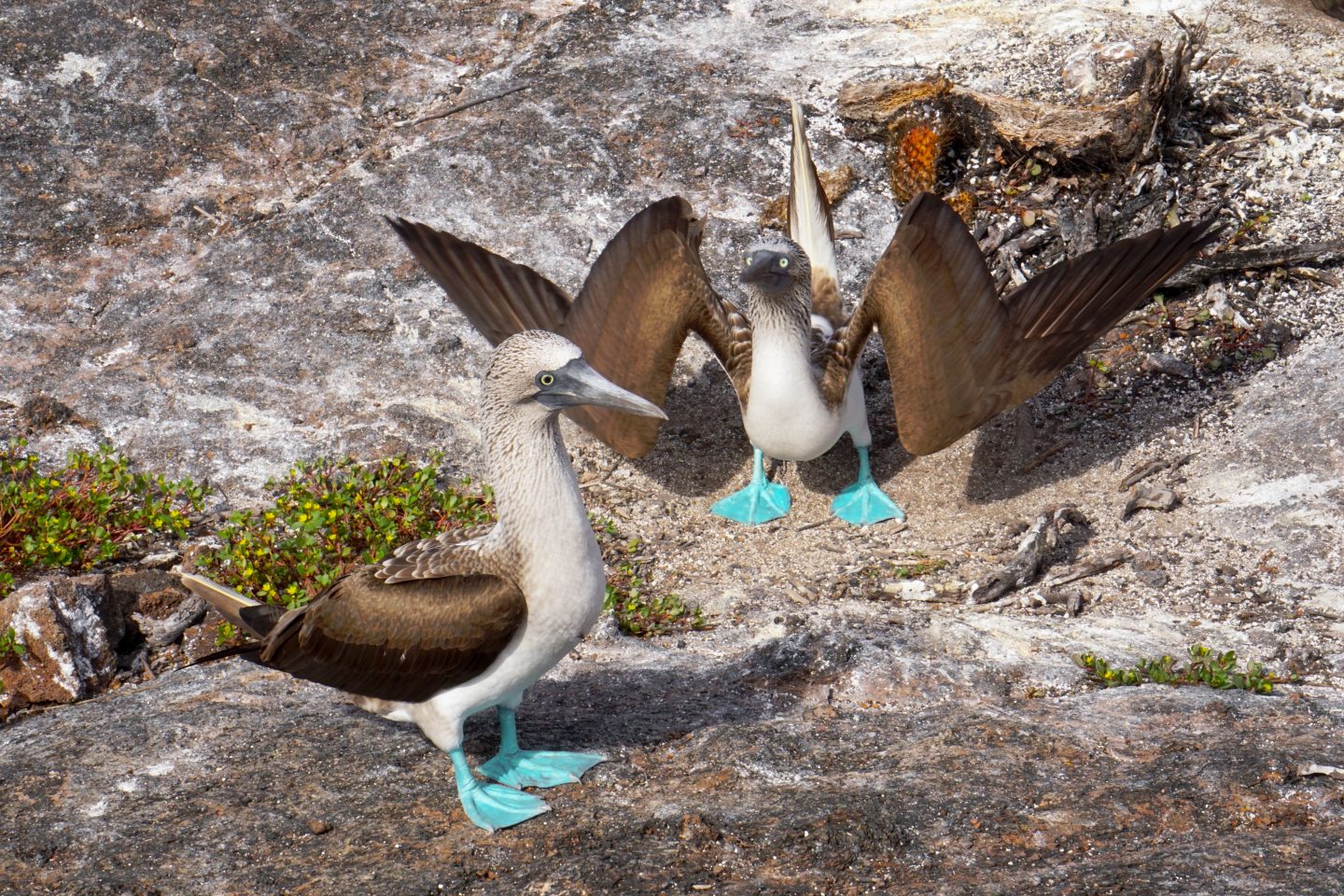
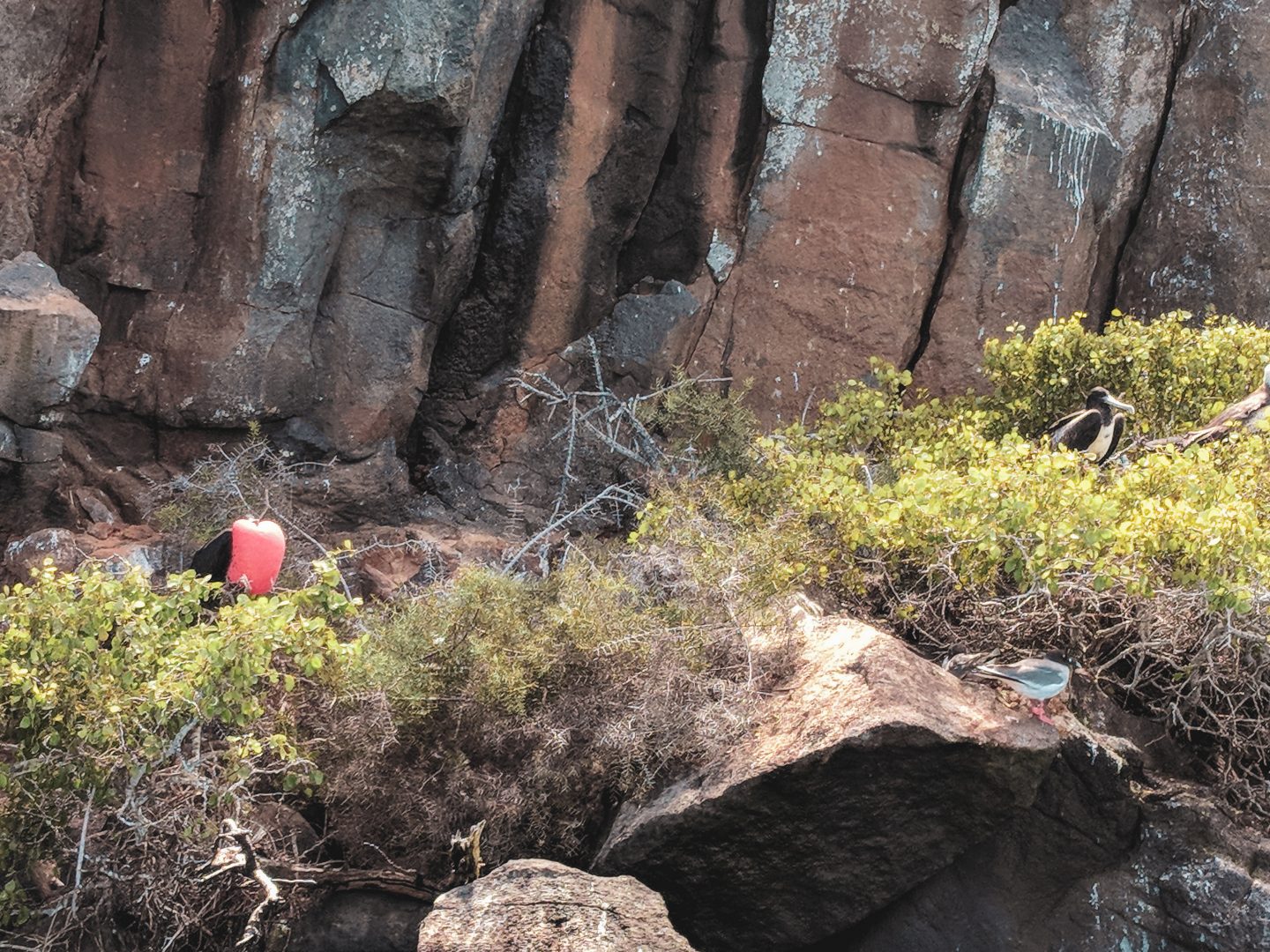
How to get there?
The Galapagos Islands are part of Ecuador and consist of 18 large islands, 3 small islands and over 100 reefs. Only 5 islands are inhabited (with hotels available): San Cristobal, Santa Cruz, Isabela, Floreana and Baltra. While rest of the islands only have animals on it and can only be reached by boat. Santa Cruz is the most populated island and Isabela is the largest. Each island has its own unique animals to see. There are two ways to go about traveling to the Galapagos:
- Cruise: The pro is you can sit back and forget about planning things yourself. Cruises can also take you to uninhabited islands as part of the itinerary. Suitable for family travel. The con is that it’s pretty expensive.
- Self-guided tour (Flight + boat between islands): This is what we did. The pro is flexibility to visit where you want when you want, and it’s relatively inexpensive.
- Fly from Quito or Guayaquil, to Baltra or San Cristobal in the Galapagos Islands. If you want to visit a few more islands, consider flying in from one island and out the other.
- Jet boats run daily between the inhabited islands. Tickets are sold on the streets and will have signs for it. We bought our tickets a day in advance and had no issues.
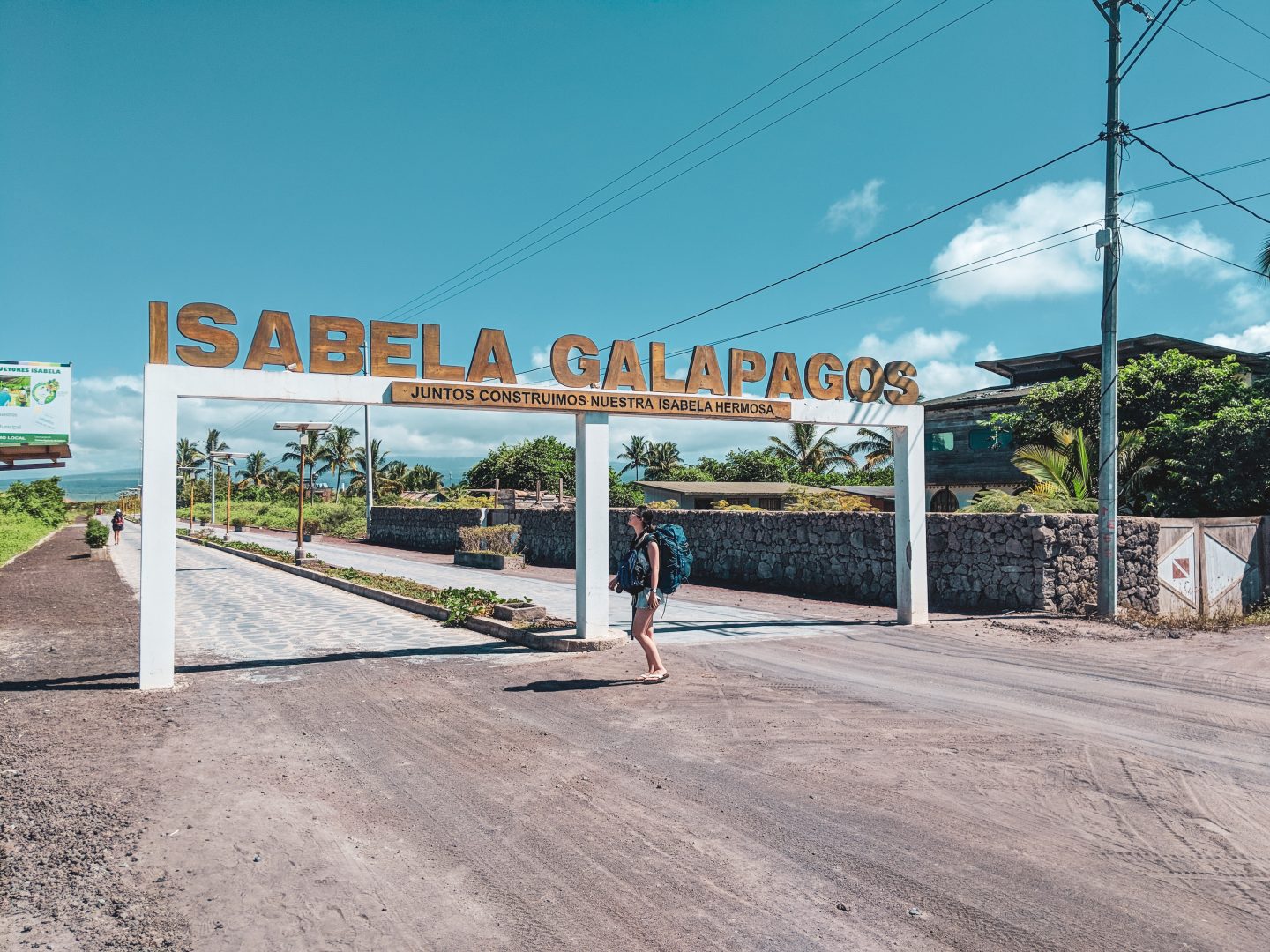
Sample Itinerary
We did quite a bit of research before heading to the Galapagos. Since there is so much to see, and we only had limited time. Below is our itinerary for reference:
- D1: Fly to Quito, stay at airport hotel
- D2: Fly from Quito to San Cristobal Airport
- D3-D5: Santa Cruz
- D6: Isabela
- D7: Santa Cruz
- D8: Beltra Airport fly to Quito
- D9: Fly out from Quito
Santa Cruz is the most commercialized of all the islands and it’s the most populated. There are many travel agencies on Santa Cruz offering various activities. Santa Cruz is also a transportation hub, which is why we were traveling back and forth in Santa Cruz. If you’re planning for a self-guided tour, we recommend checking the available boat routes between islands in advance. Not all boats go between each island, often it has to go through Santa Cruz.
Recommendations
1. Isabela
Isabela is the largest island, with a great variety of animals residing here. This island is my personal favorite. If you wish to see blue-footed booby or the Galapagos penguins, don’t miss out on Isabela island. We only stayed here for one night. If I could do it all over again, I’d stay here for at least one more night.
I highly recommend snorkeling in Los Tuneles. You will need to go with a guided tour for this since it can only be reached by boat. We saw tons of animals on this tour and it’s so worth it. We were up close with the blue-footed boobies, a specie that can only be found in the Galapagos, seeing how they hatch and care for their eggs was priceless.
Los Tuneles was the best snorkeling place of all the places we snorkeled on the Galapagos, or the world! We saw even more animals here than we did during our dives. There are hordes of white-tip sharks and black-tip sharks, hordes of Galapagos giant sea turtles, seahorses, water snakes, stingrays etc..
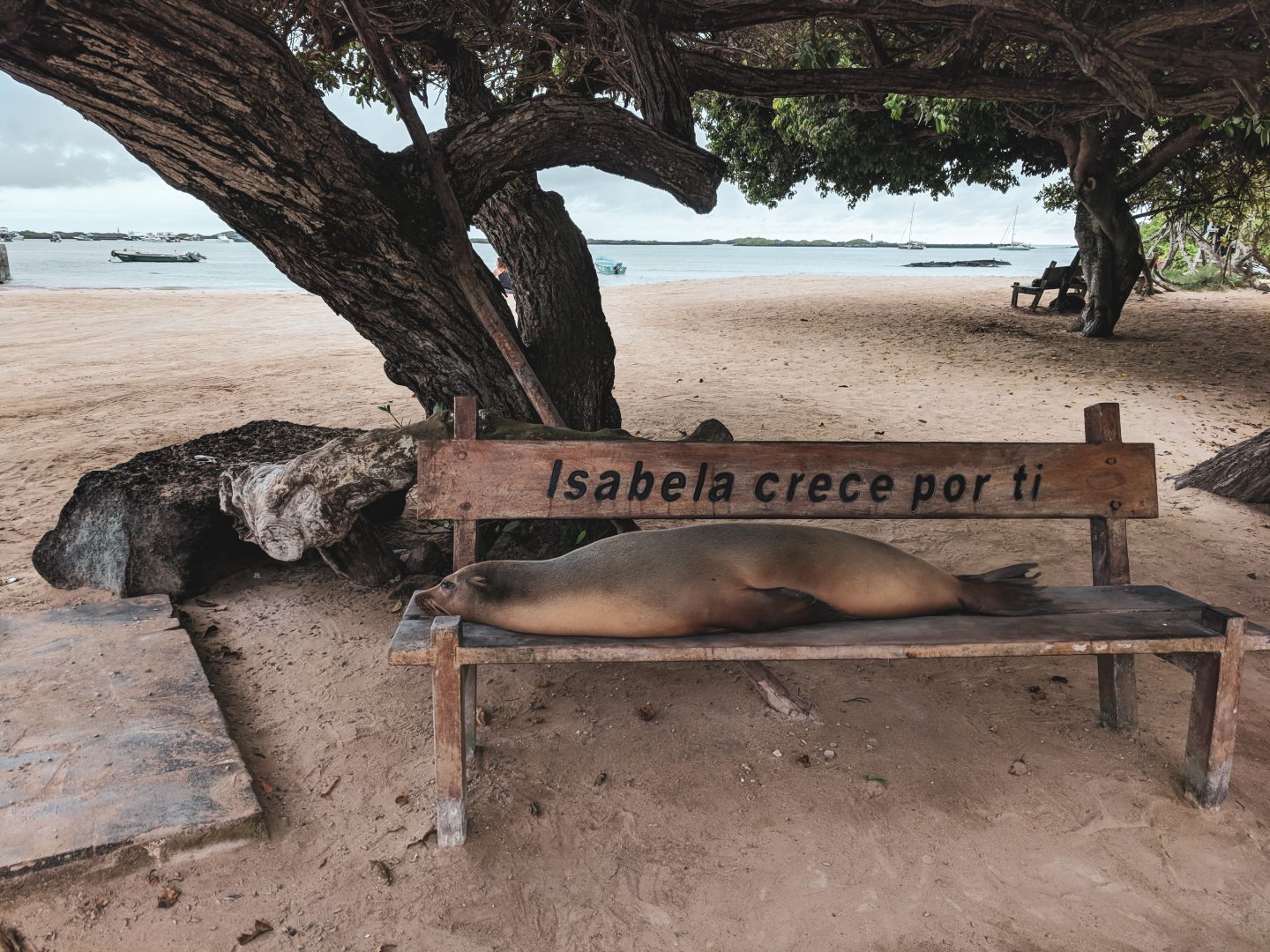
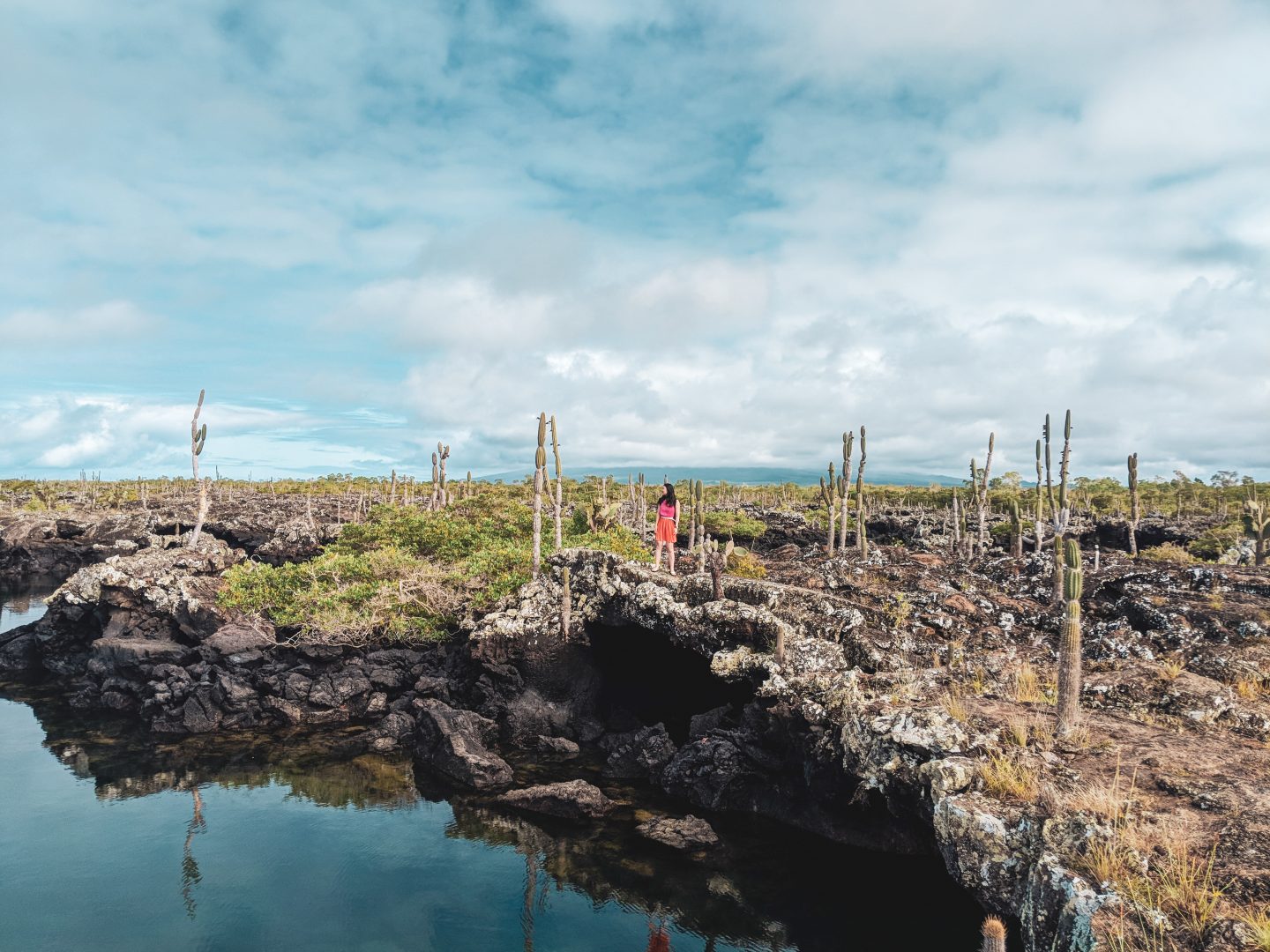
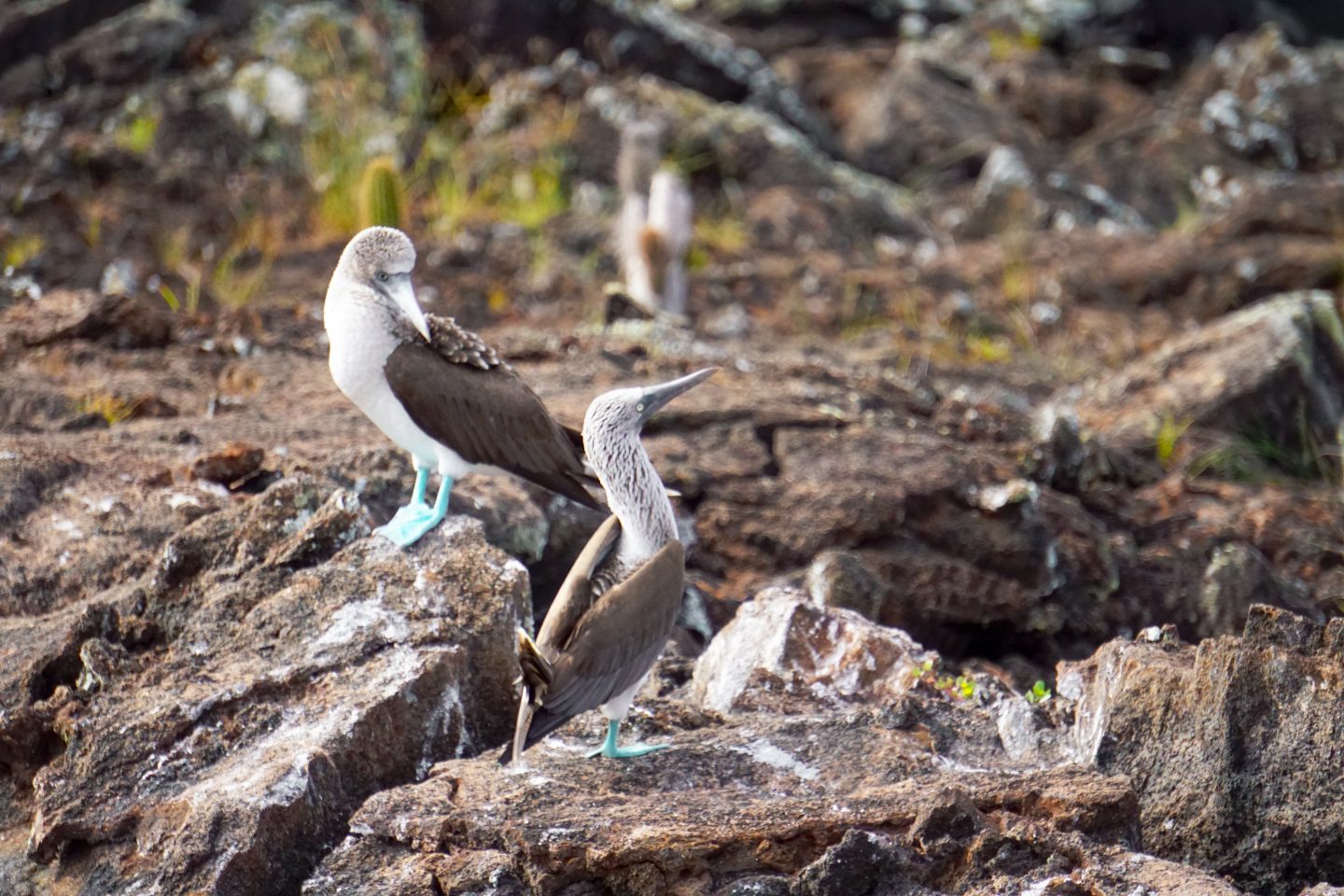
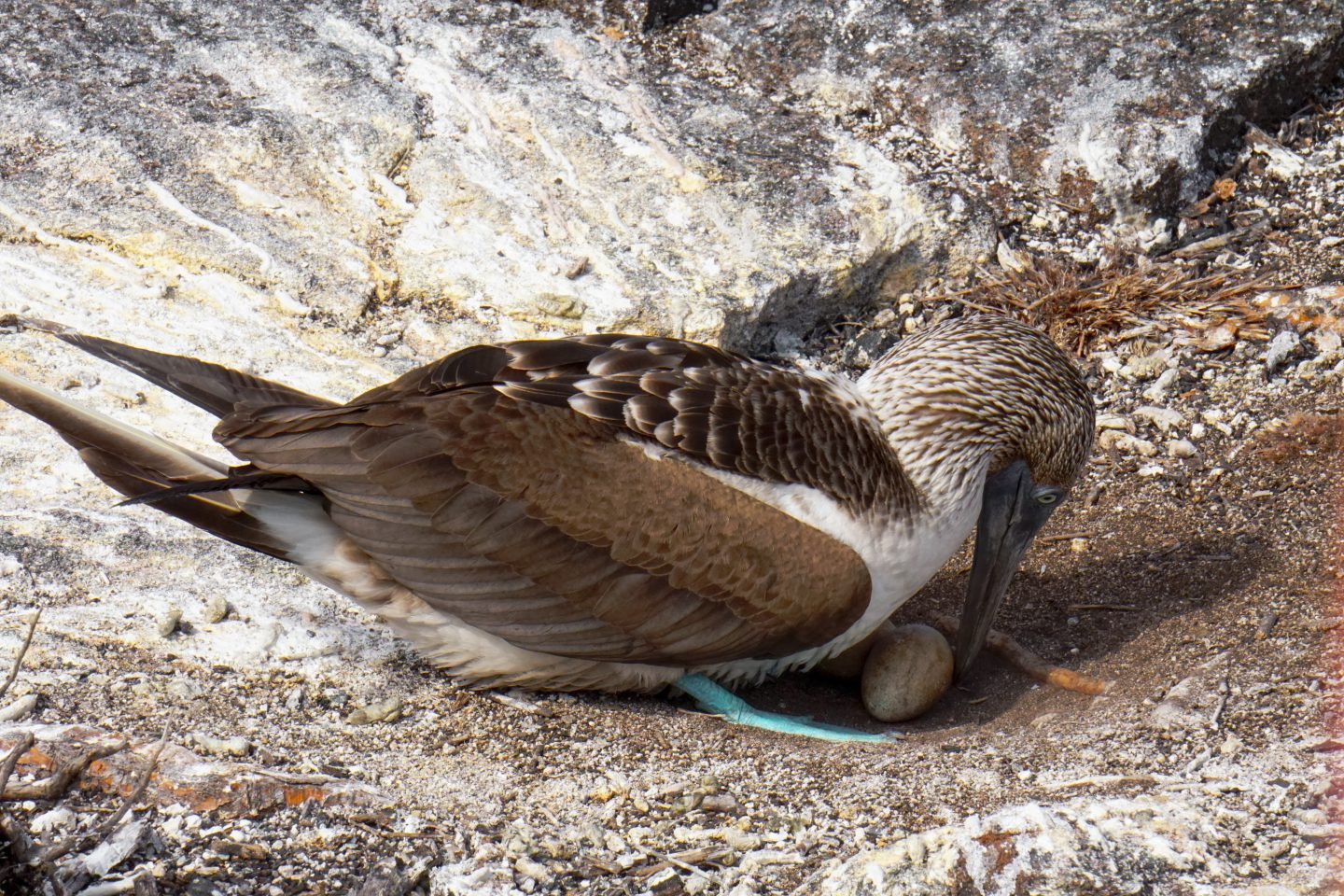
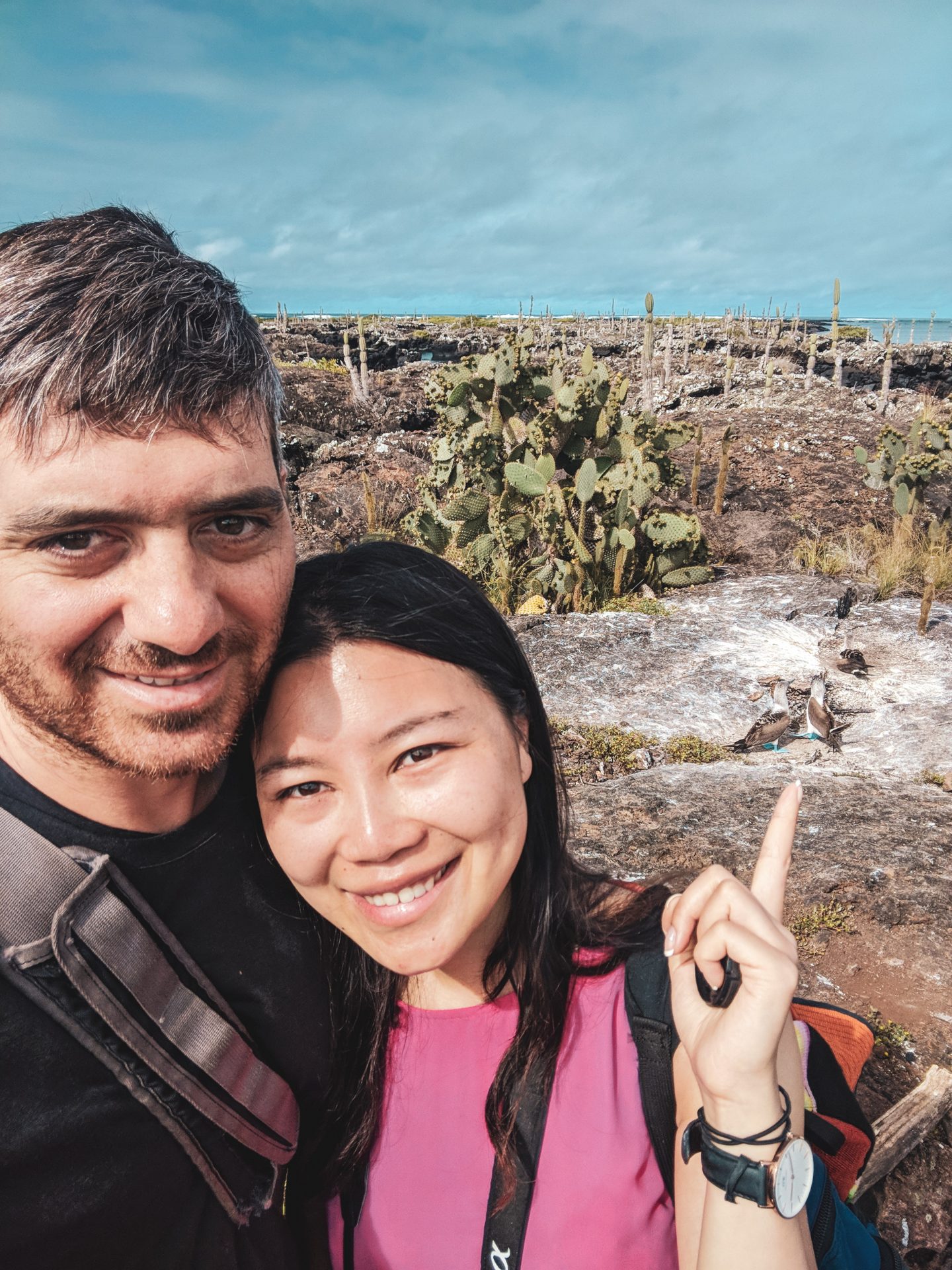
2. San Cristobal
If you’re planning to go to San Cristobal, we recommend snorkeling in Playa Punta Carola. You can snorkel here on your own and it’s completely FREE! Just bring your own snorkeling gears and you are all set. It’s a great snorkeling spot. Imagine yourself swimming with sea turtles and sea lions right next to you, time stops and nothing else mattered. It’s just you and the nature, peaceful and harmonious. You’ll also spot some Flightless cormorants crabs that are unique to the Galapagos Islands.
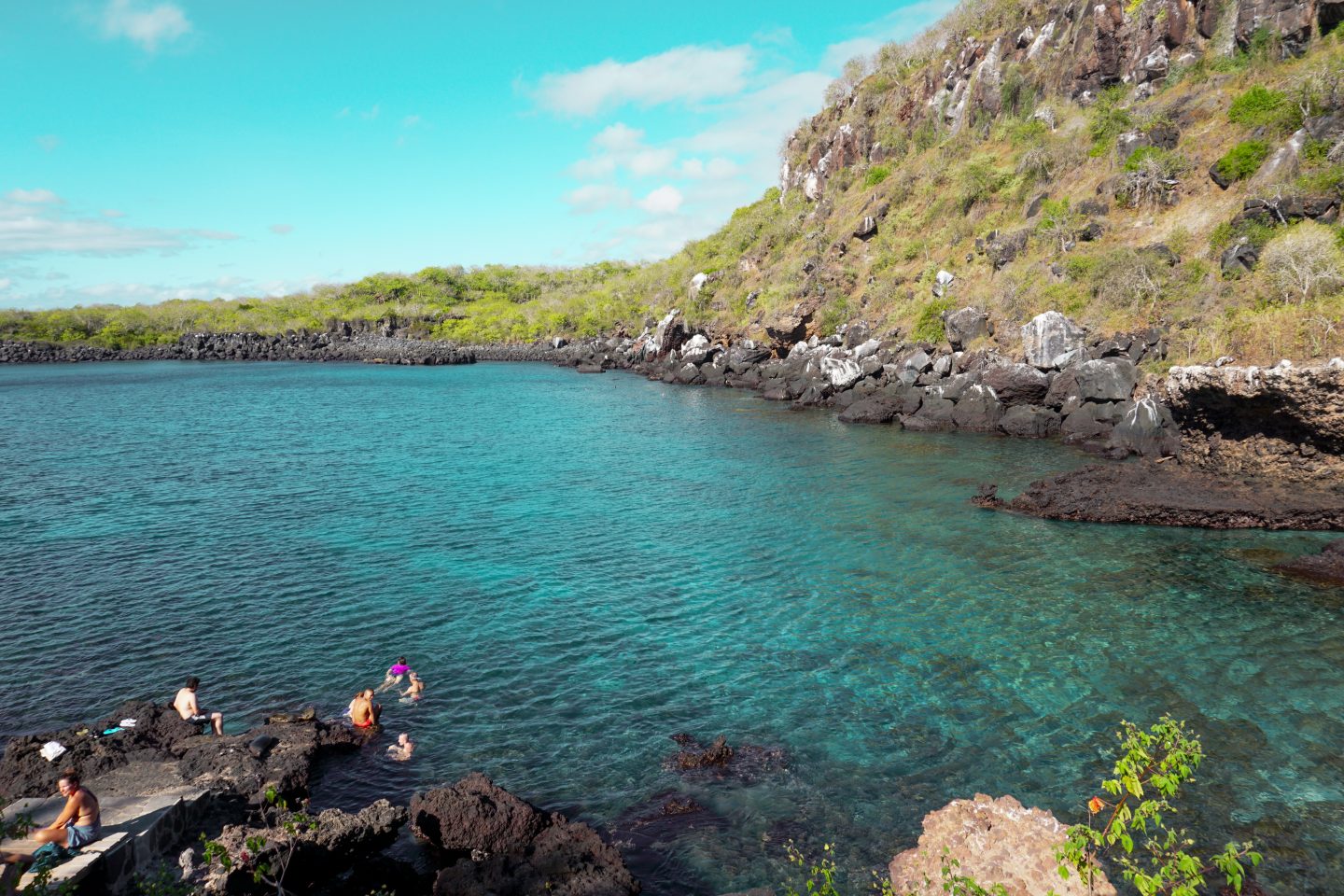
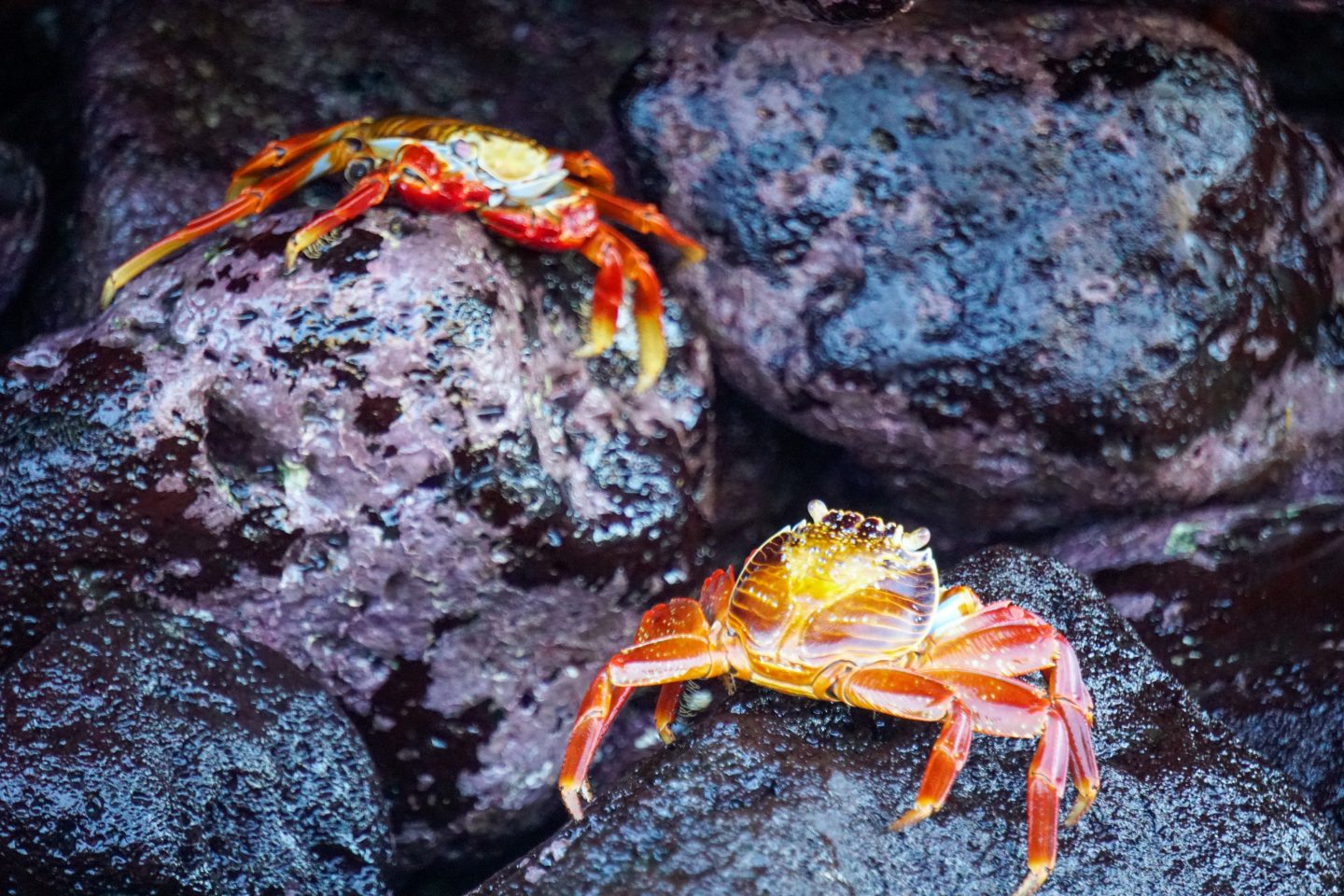
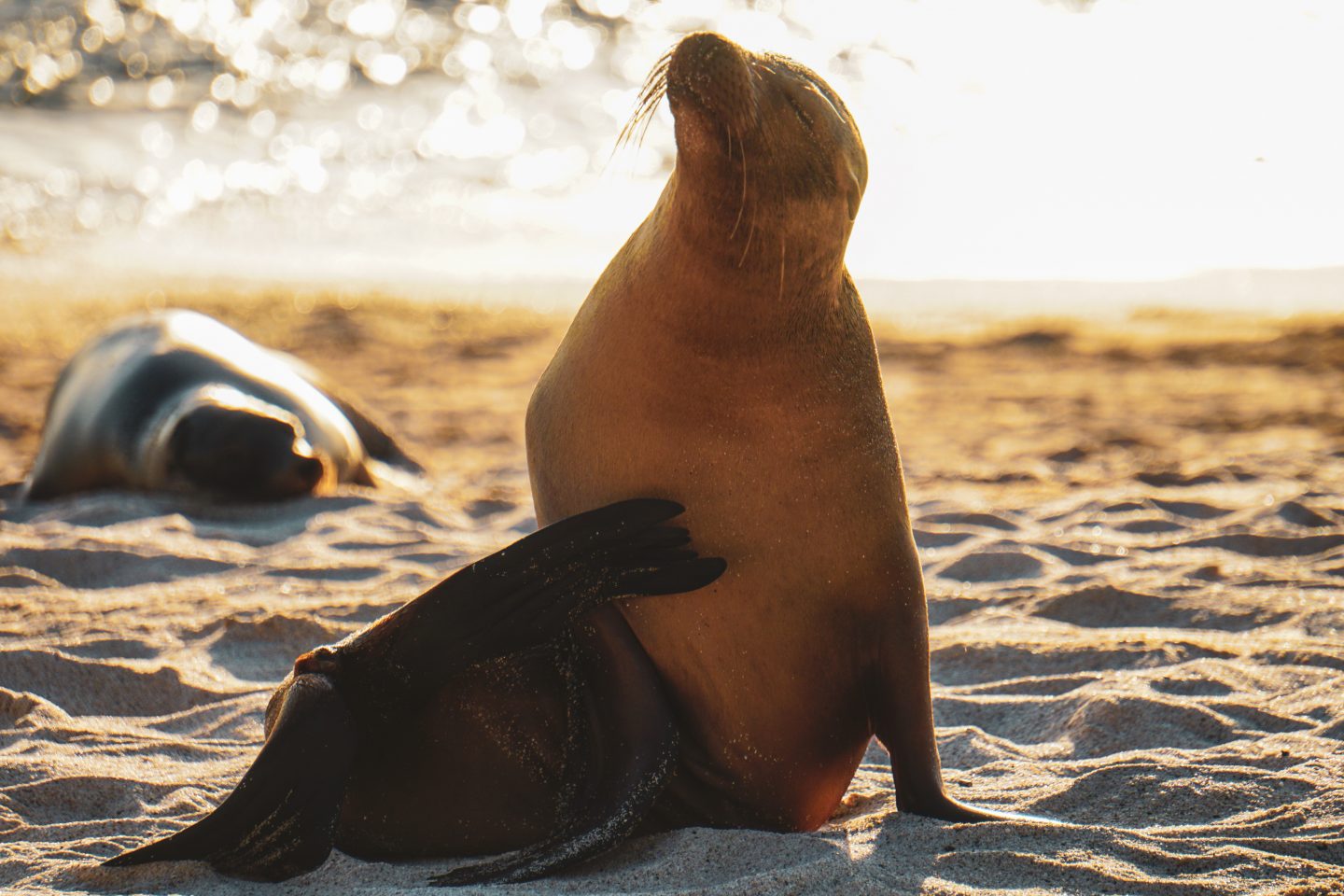
3. Santa Cruz
El Chato – Giant Tortoise Reserve is a great place to see the Galapagos giant tortoise. These giant turtles live free range in this reserve and you can get up close with this magical creature.
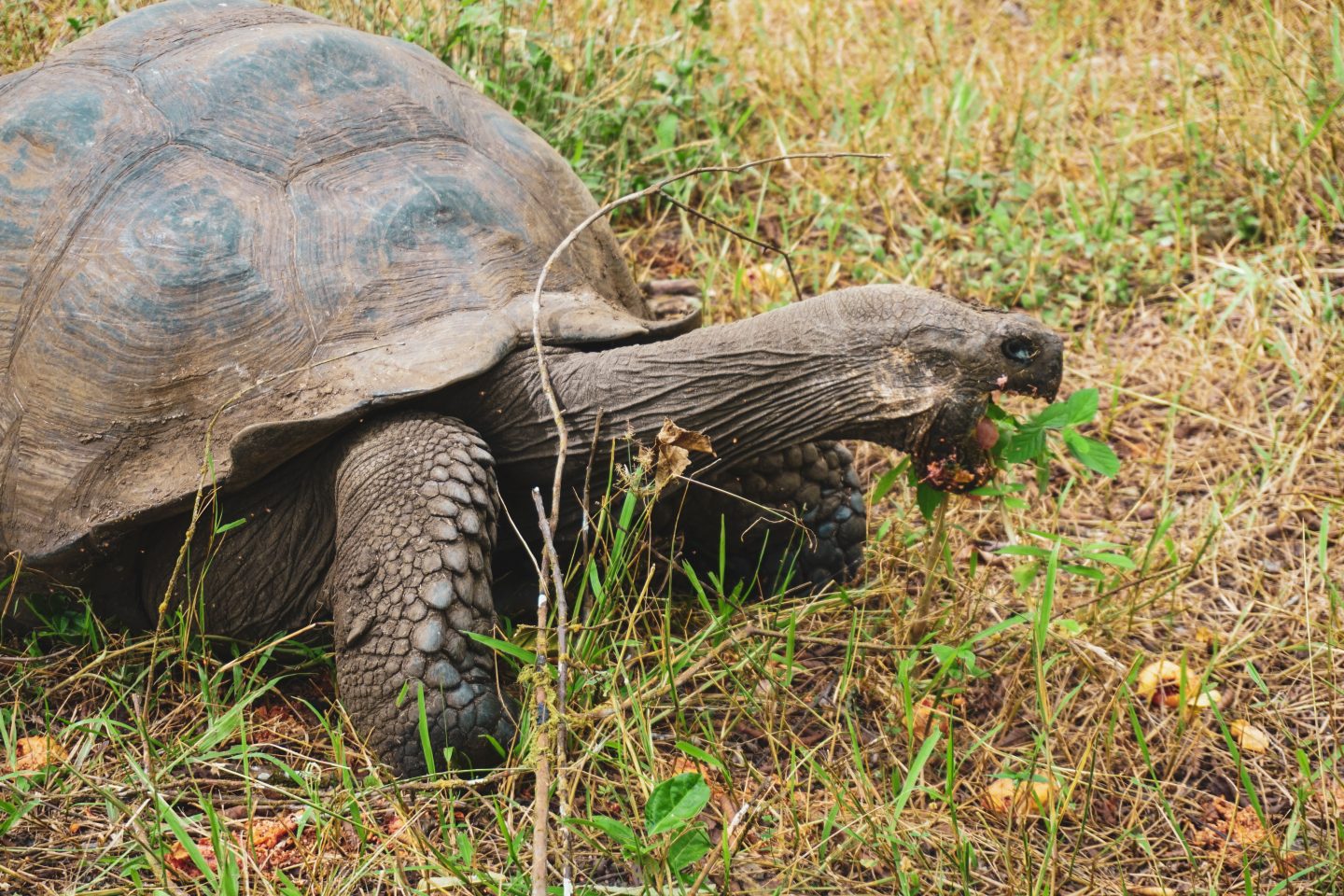
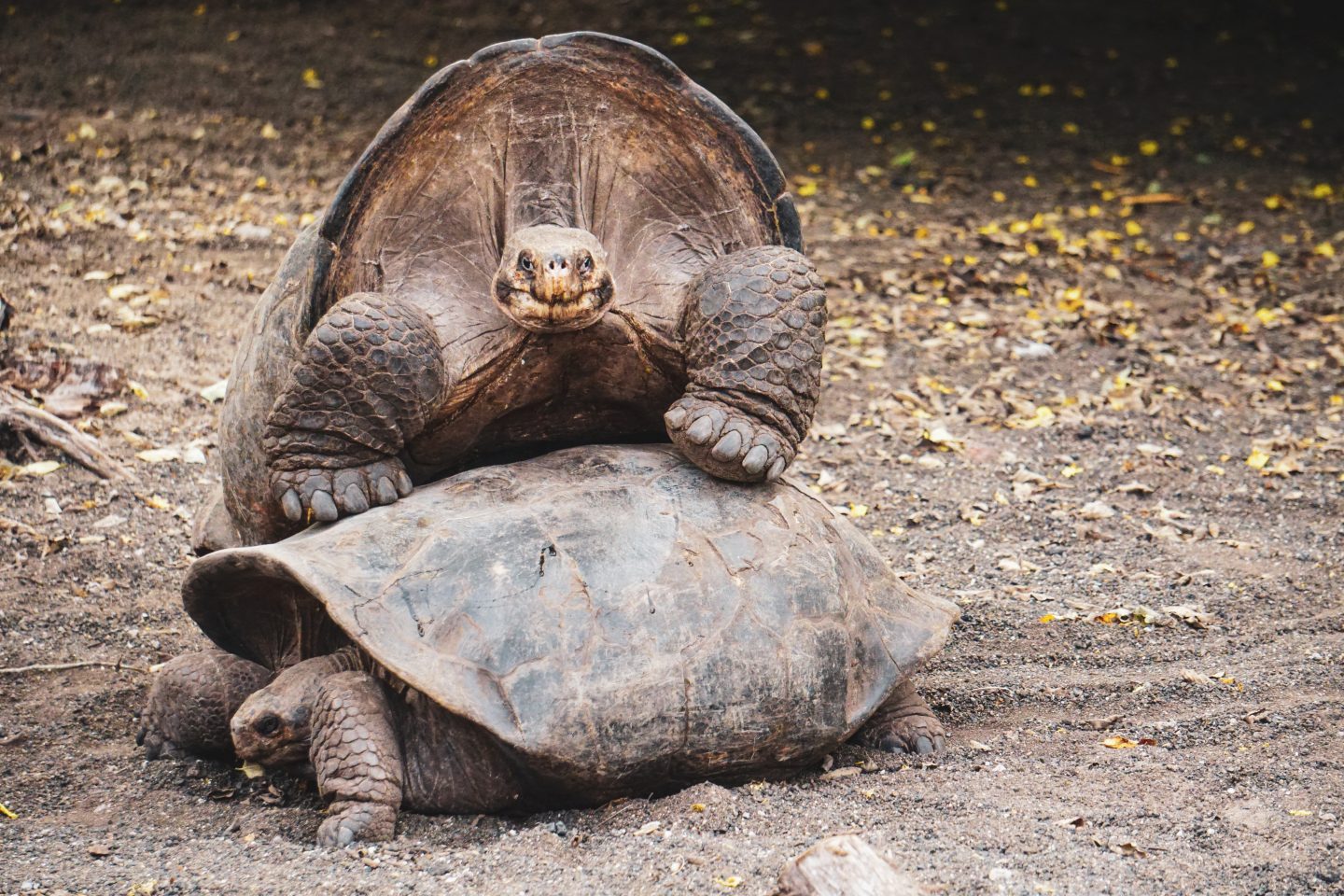
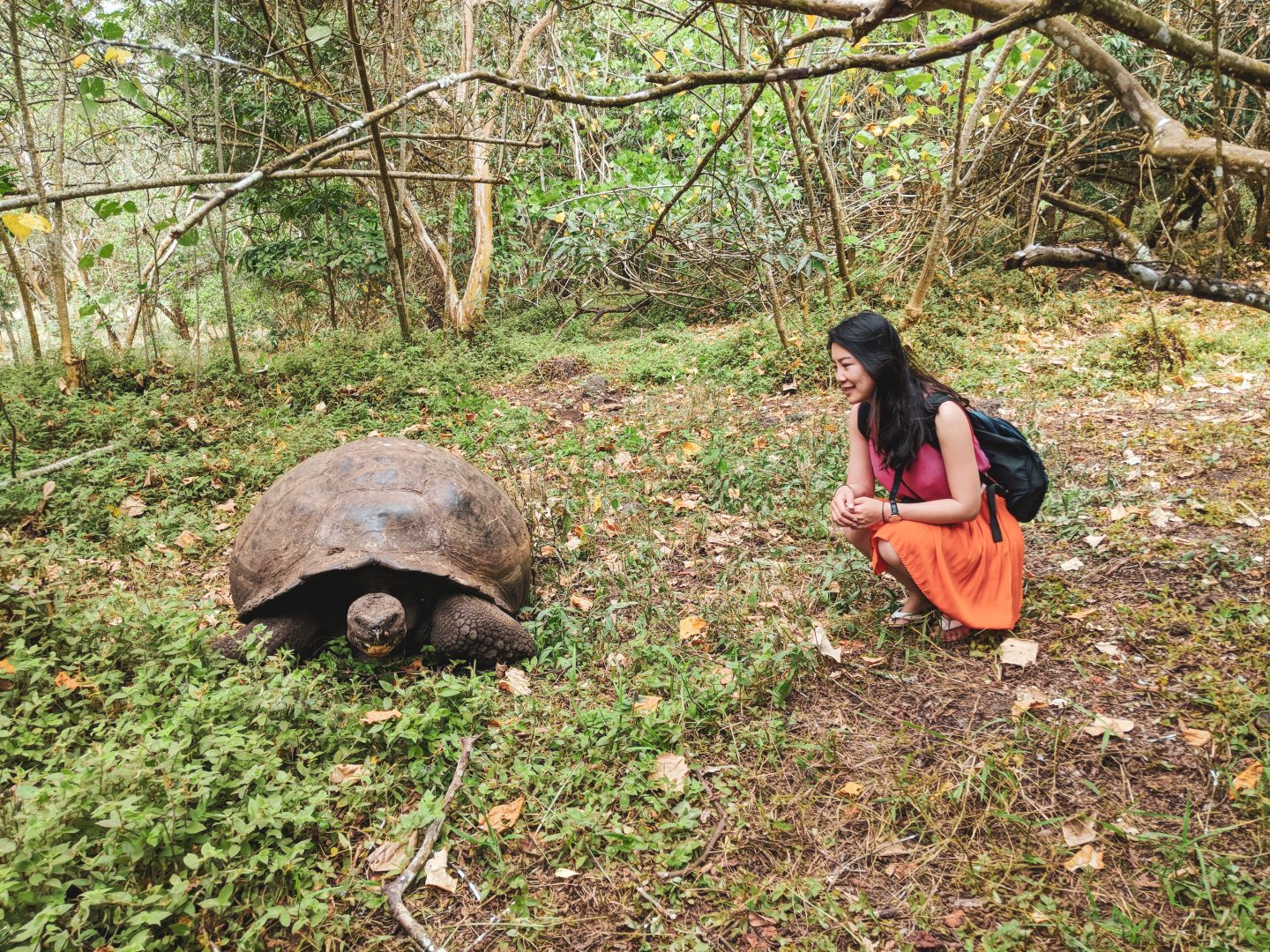
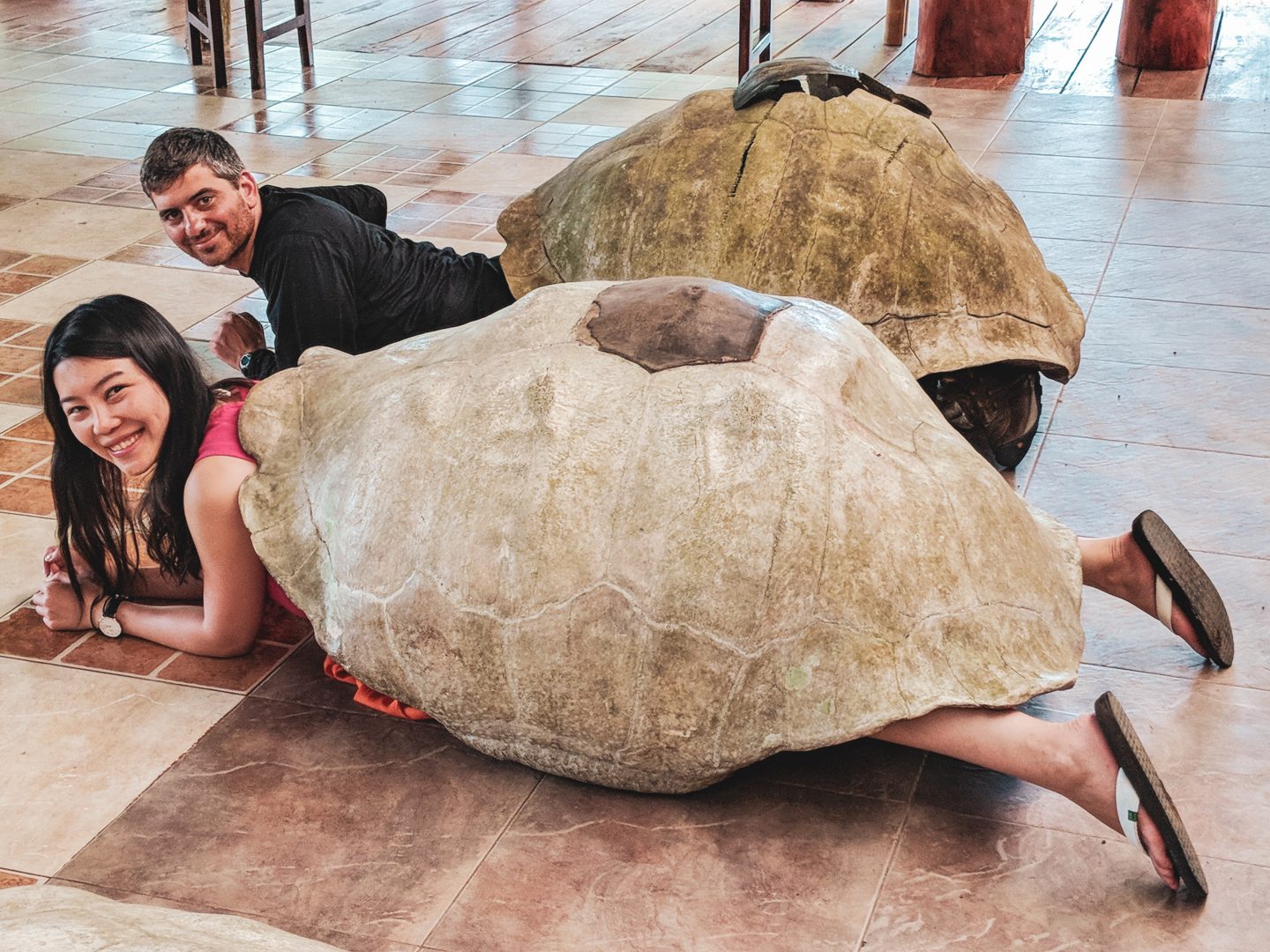
4. Snorkeling and Diving
The underwater world of the Galapagos Islands is unbelievable. Before coming here, we got our diver’s license so we can get a glimpse of the amazing underwater marine life here – Hammerhead sharks, white tipped and black tipped sharks, giant turtles, all kinds of stingrays, to name a few. Oh there are so much to see. If you get lucky, you can catch a group of penguins swimming in the ocean. Our guide showed us a video he took with about 100 penguins swimming in the ocean right next to him. They swirl in the clear ocean water in such speed, creating an incredible jaw-dropping scene. We were thrilled to see one swimming penguin while getting off the boat, it’s not a group swimming party but we were still very thrilled to spot even one.
Some of the best dive sites are only accessible via livaboard. It’s best to book them online in advance. Oh one more thing, the currents here are relatively strong, so make sure you pick the right difficulty level dive suitable for you.
If diving is not your cup of tea, snorkeling at the Galapagos is something else too! You can actually see a lot of animals by just snorkeling. Since there are more animals than humans on the Galapagos, the animals here are not afraid of people and are comfortable being around people. The Galapagos requires people to keep 6 feet away from the animals. It’s a great idea to bring your own snorkeling gears. You can snorkel on your own without signing up for any tours, and still get to see lots of animals. The best part? It’s completely FREE! One thing to note, it’s pretty rocky under water while snorkeling here, we found it helpful to wear diving socks or water shoes – it protects your feet from getting scratched by the rocks.
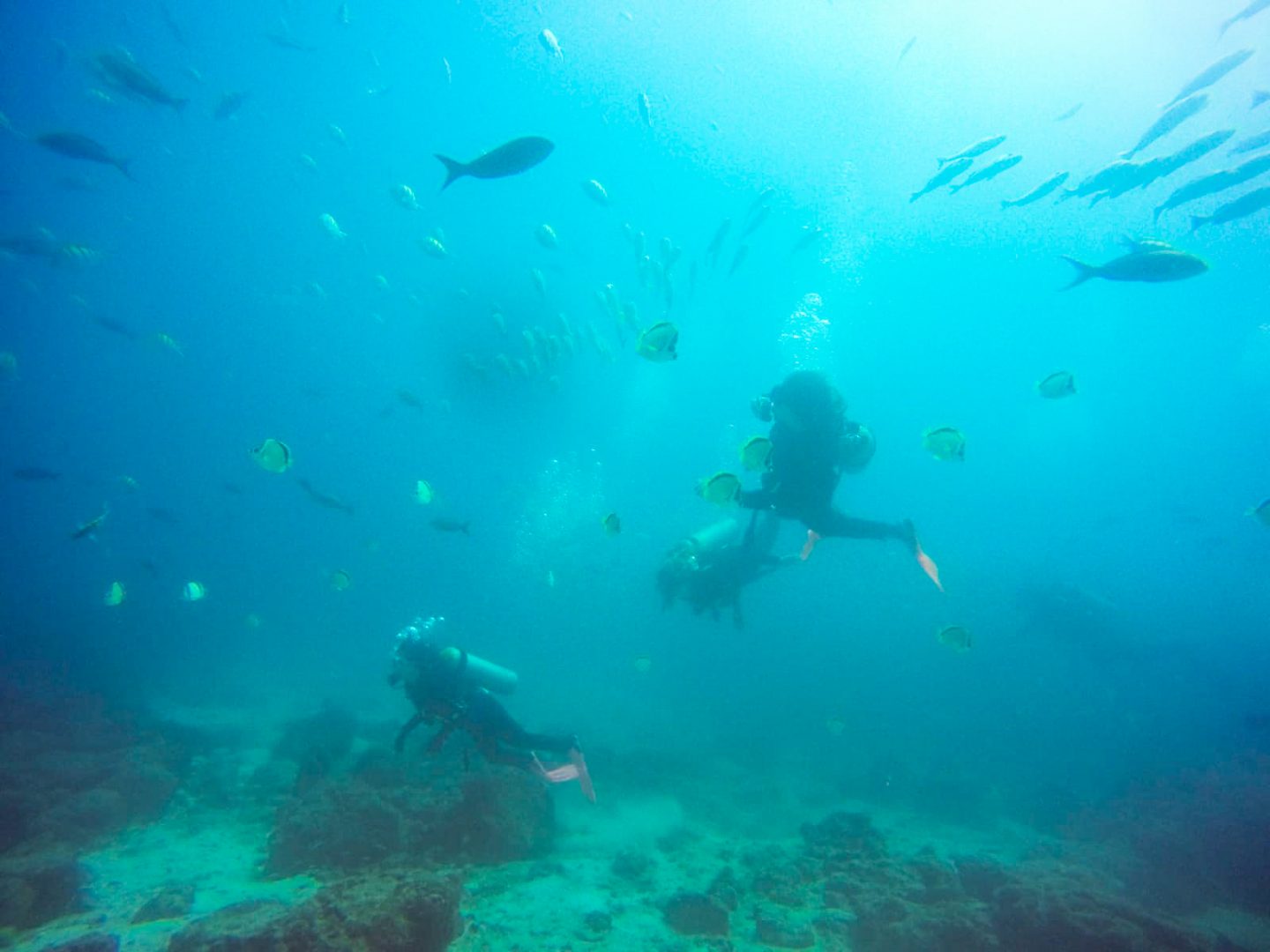
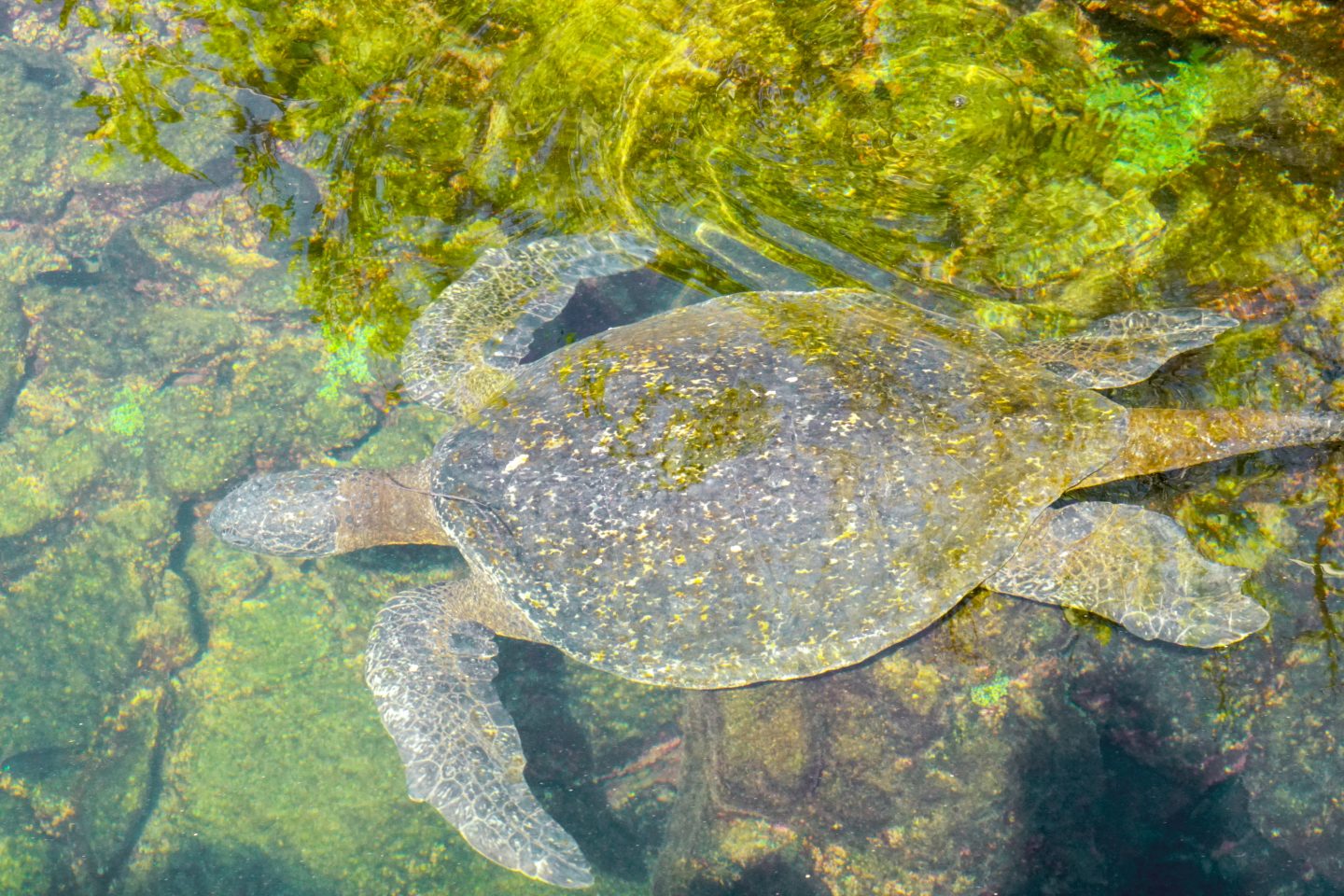
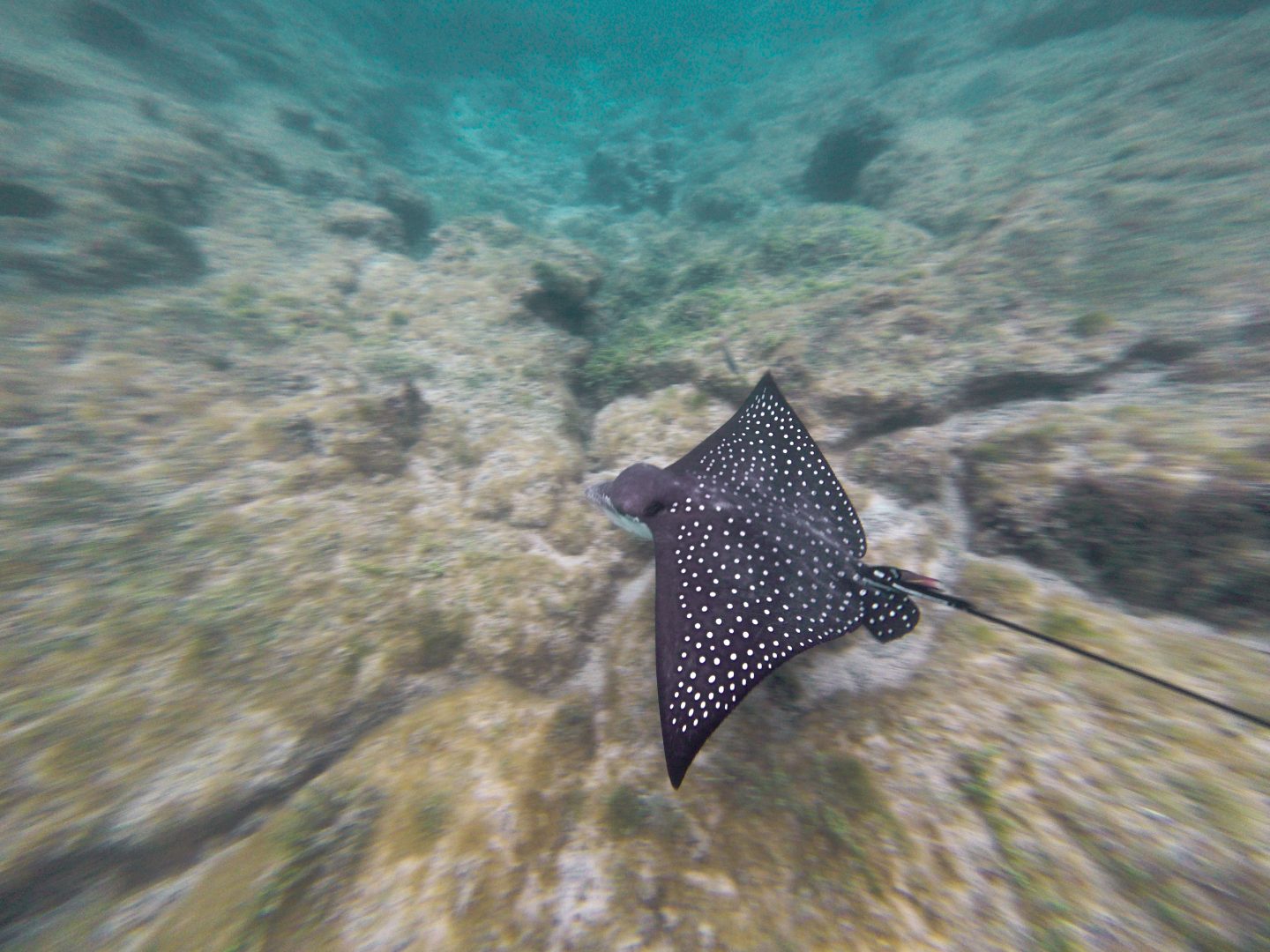
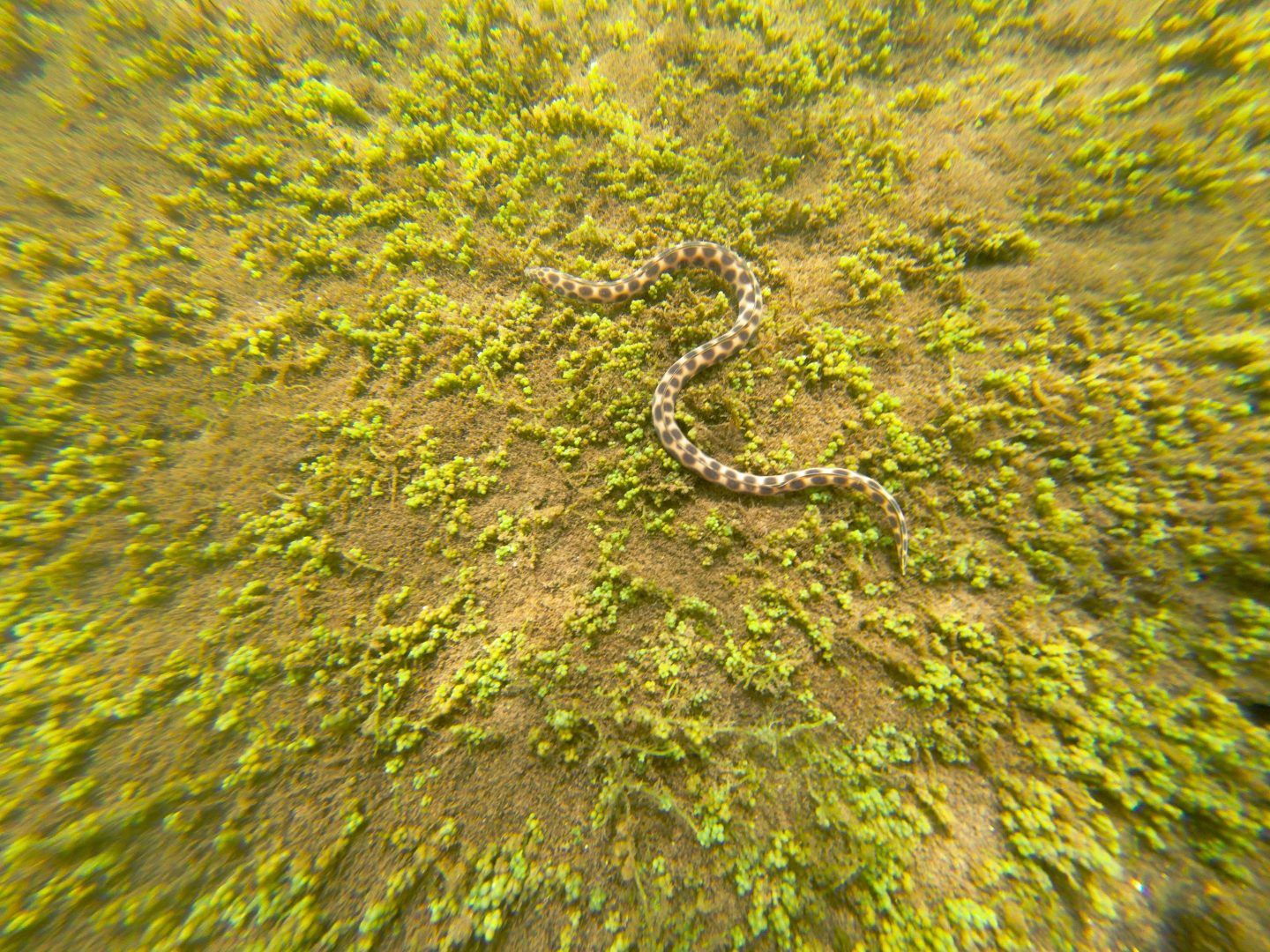
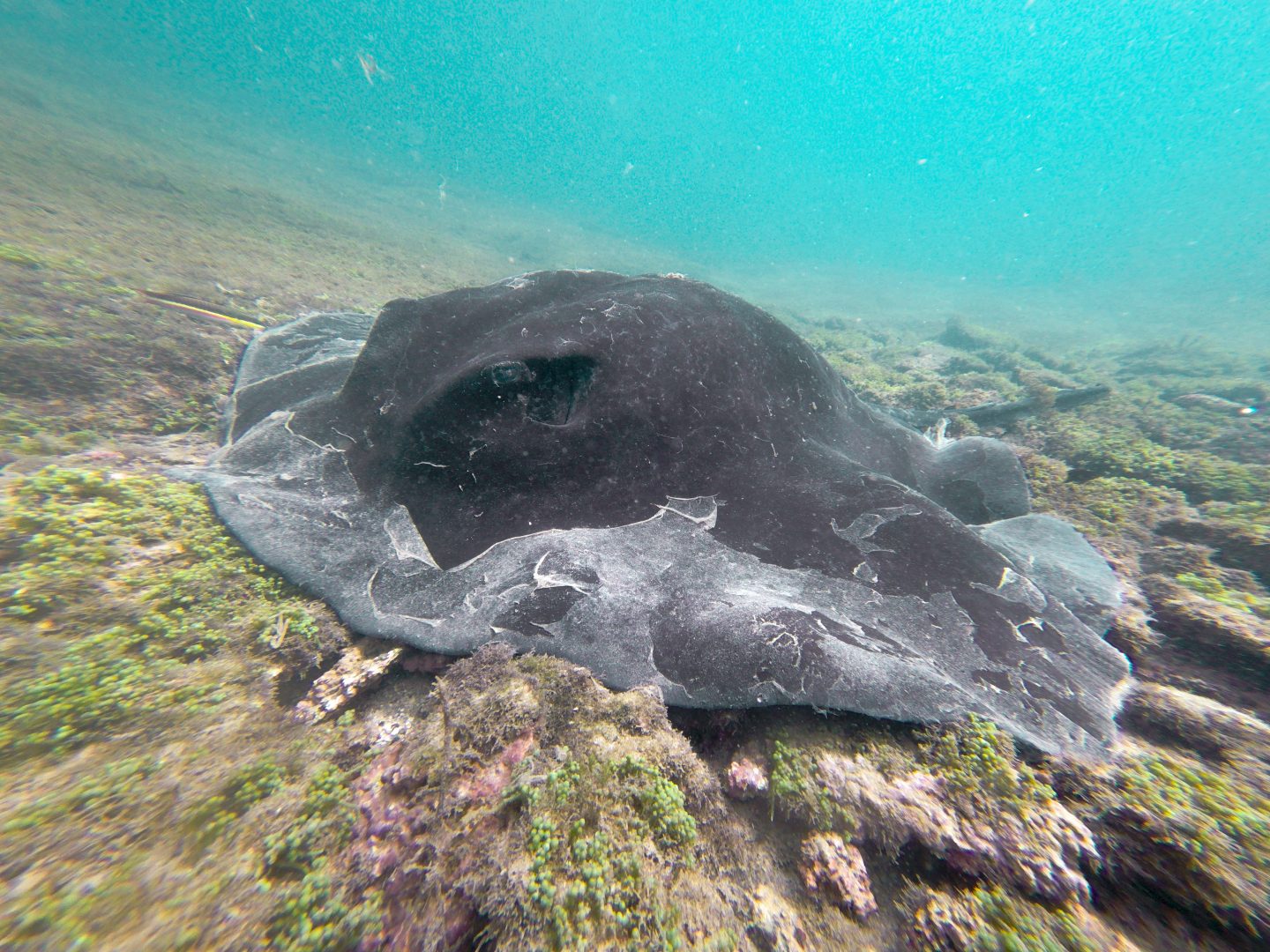
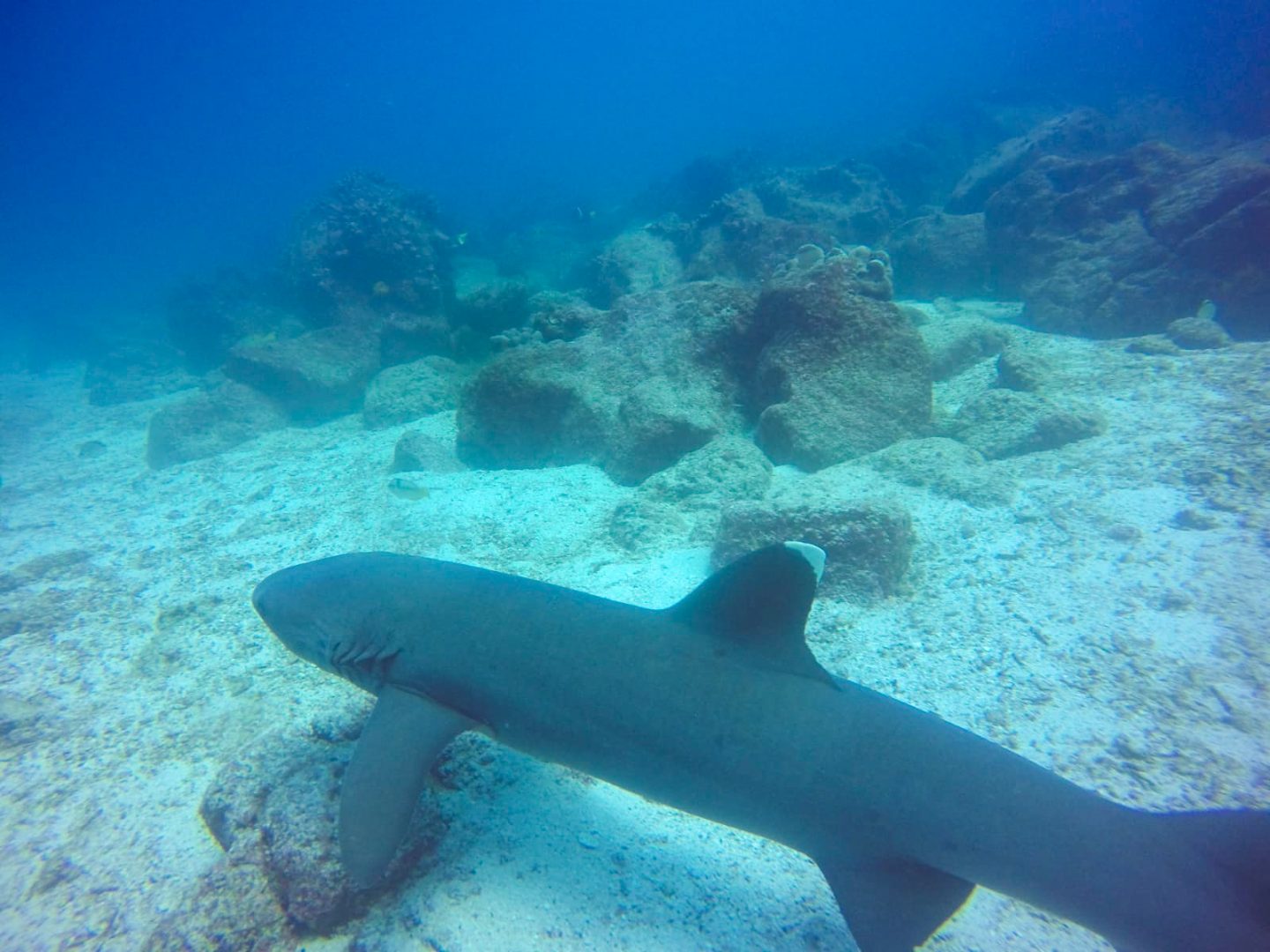
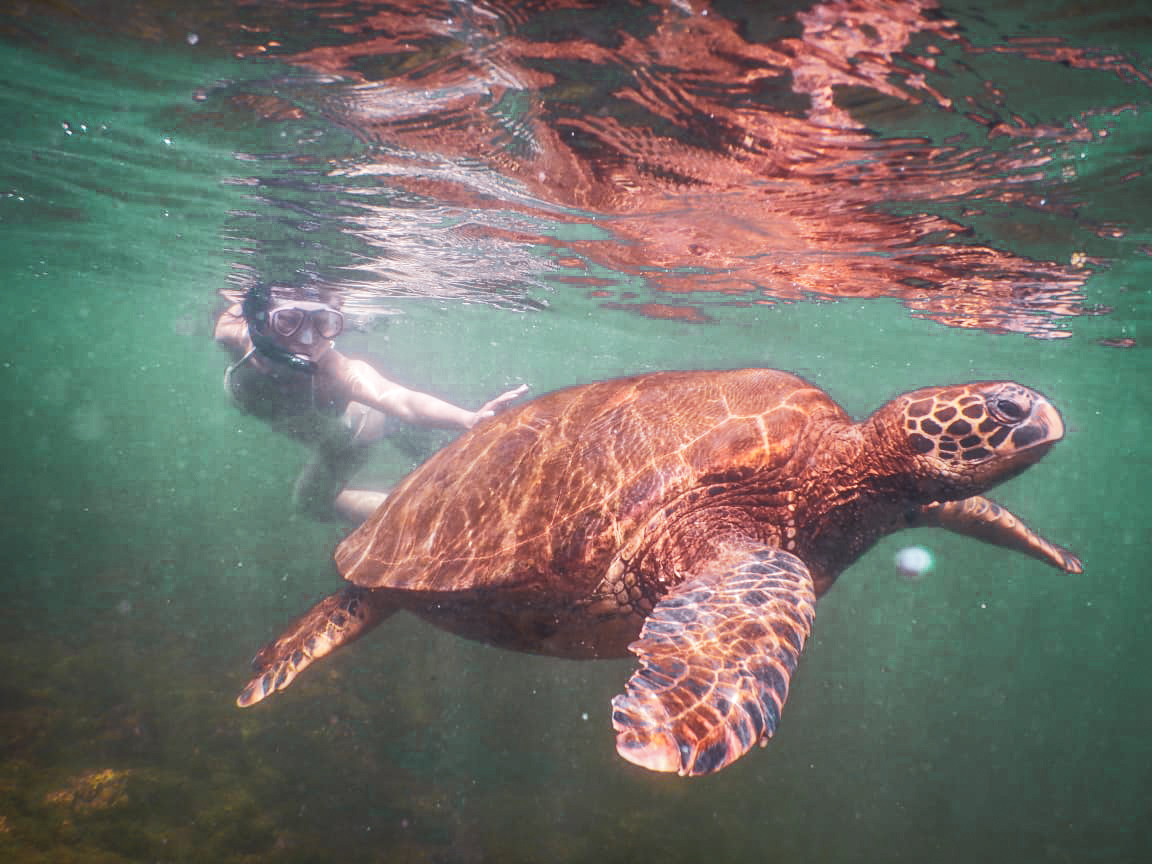
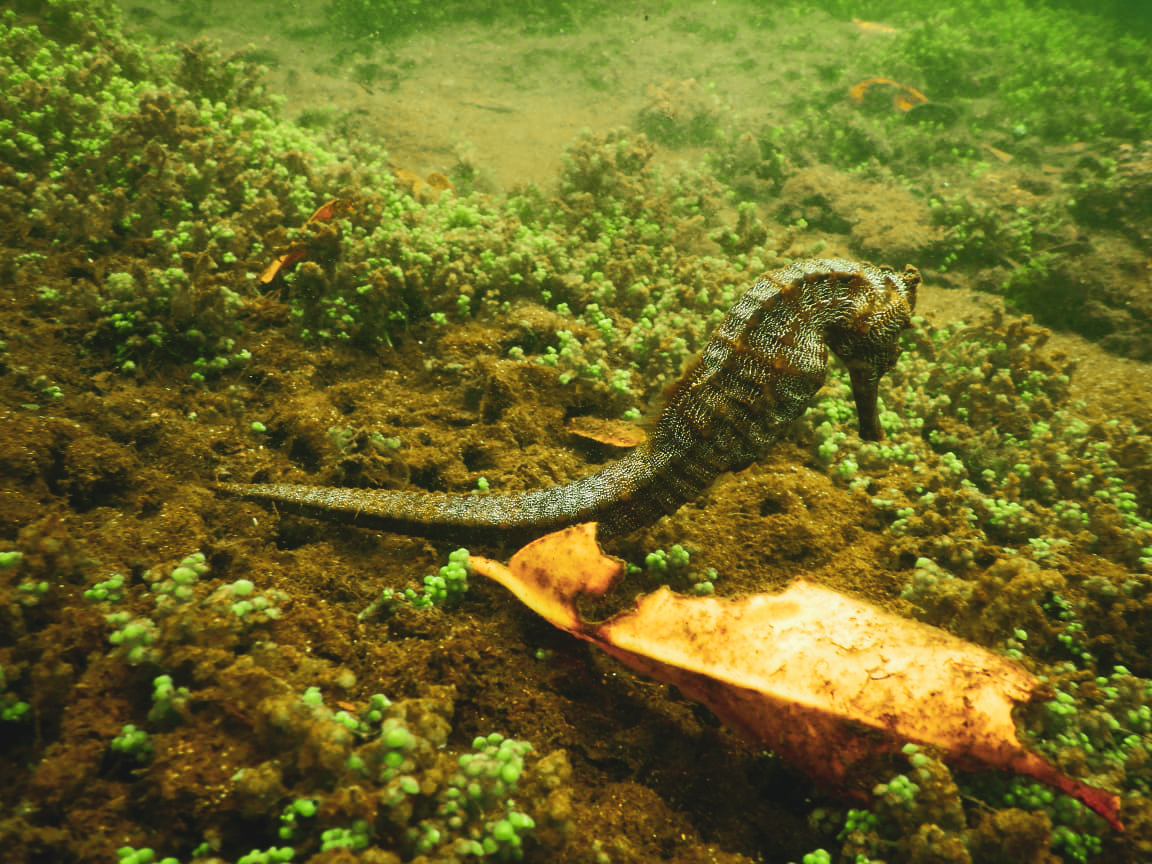
It’s incredible how this seclusive island managed to nourish so many unique creatures that can’t be found elsewhere in the world. Yes, Mother Nature never seizes to amaze.
Thank you Galapagos Islands, for showing us the wonders of this world. It truly is a trip of a lifetime!
